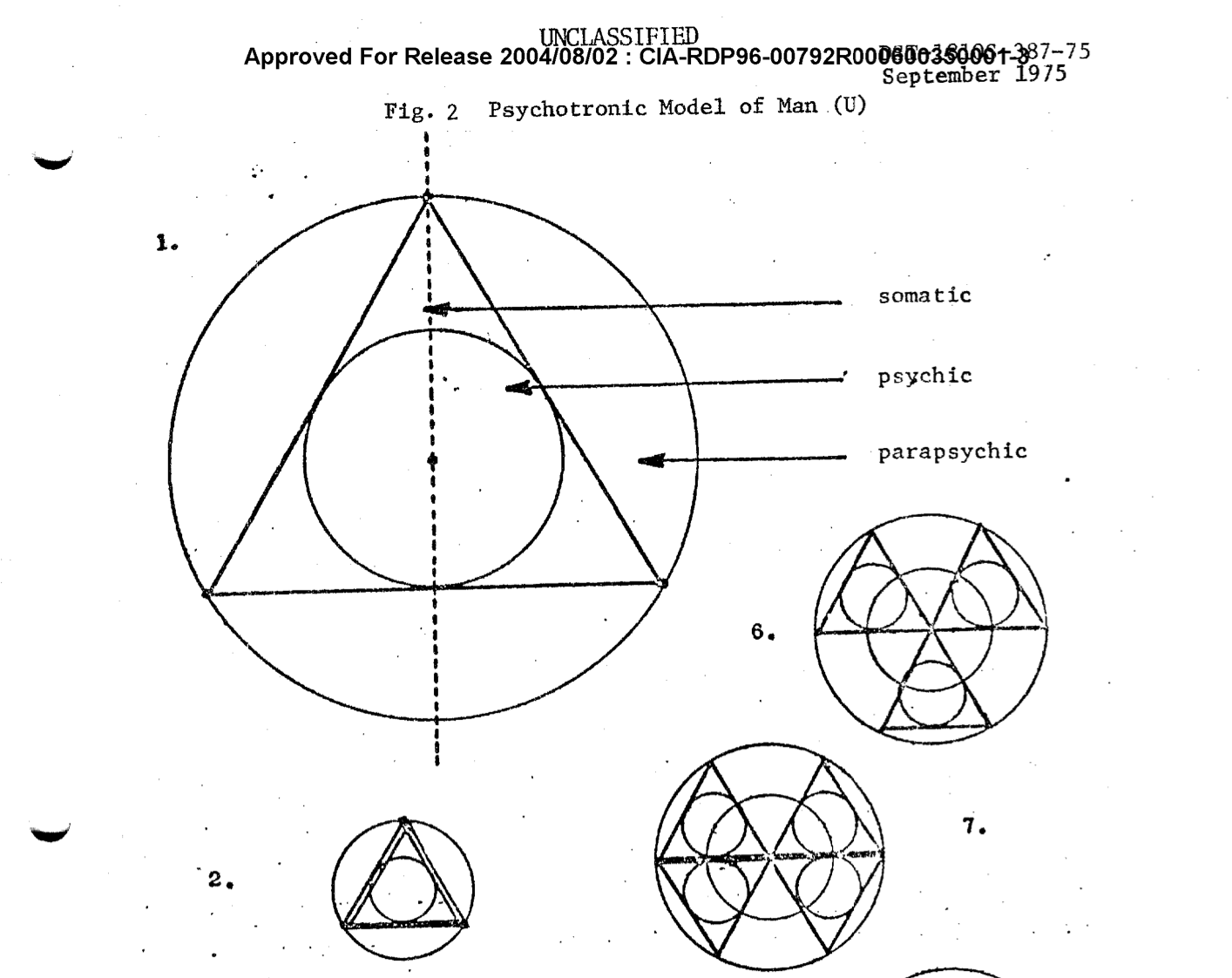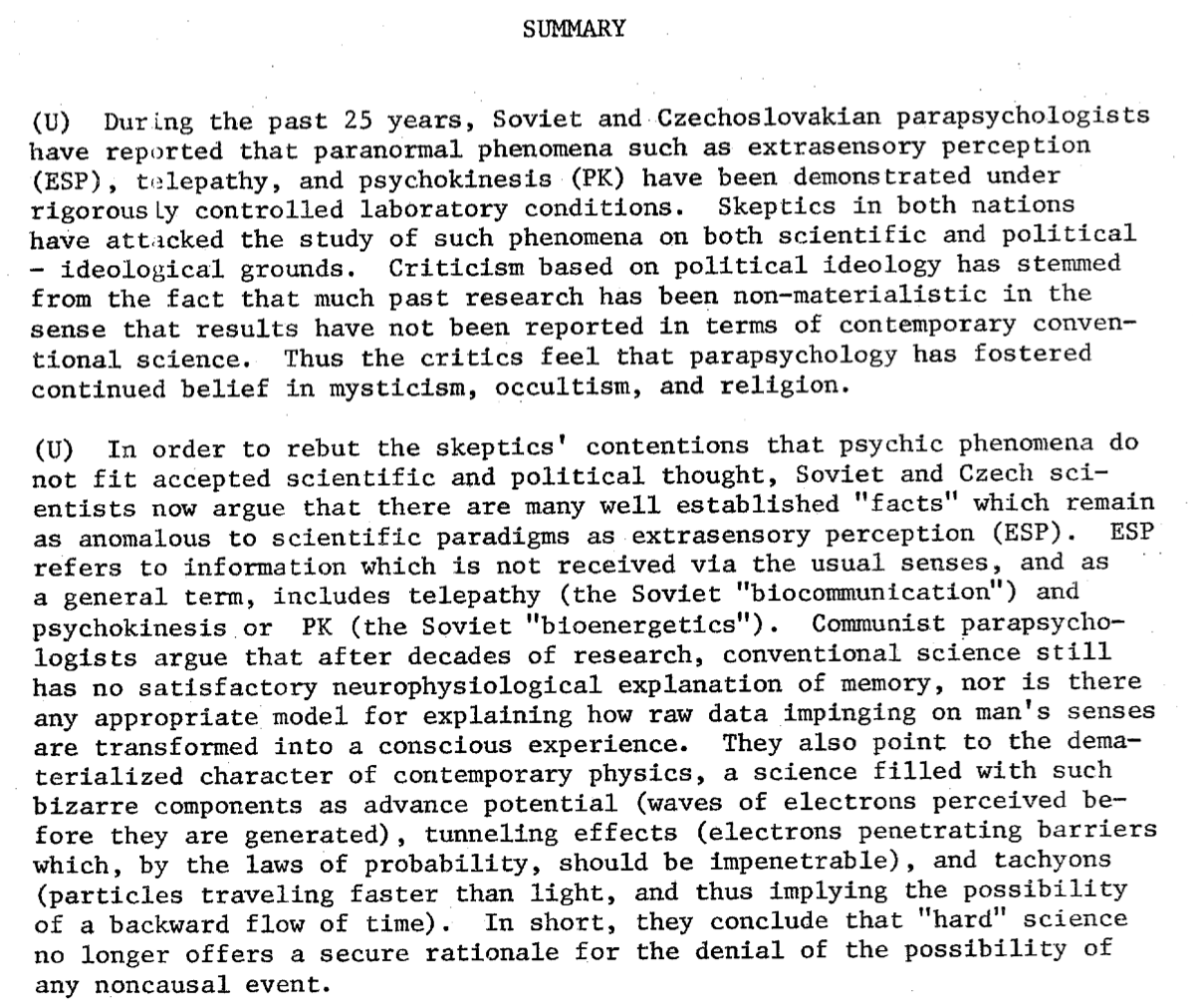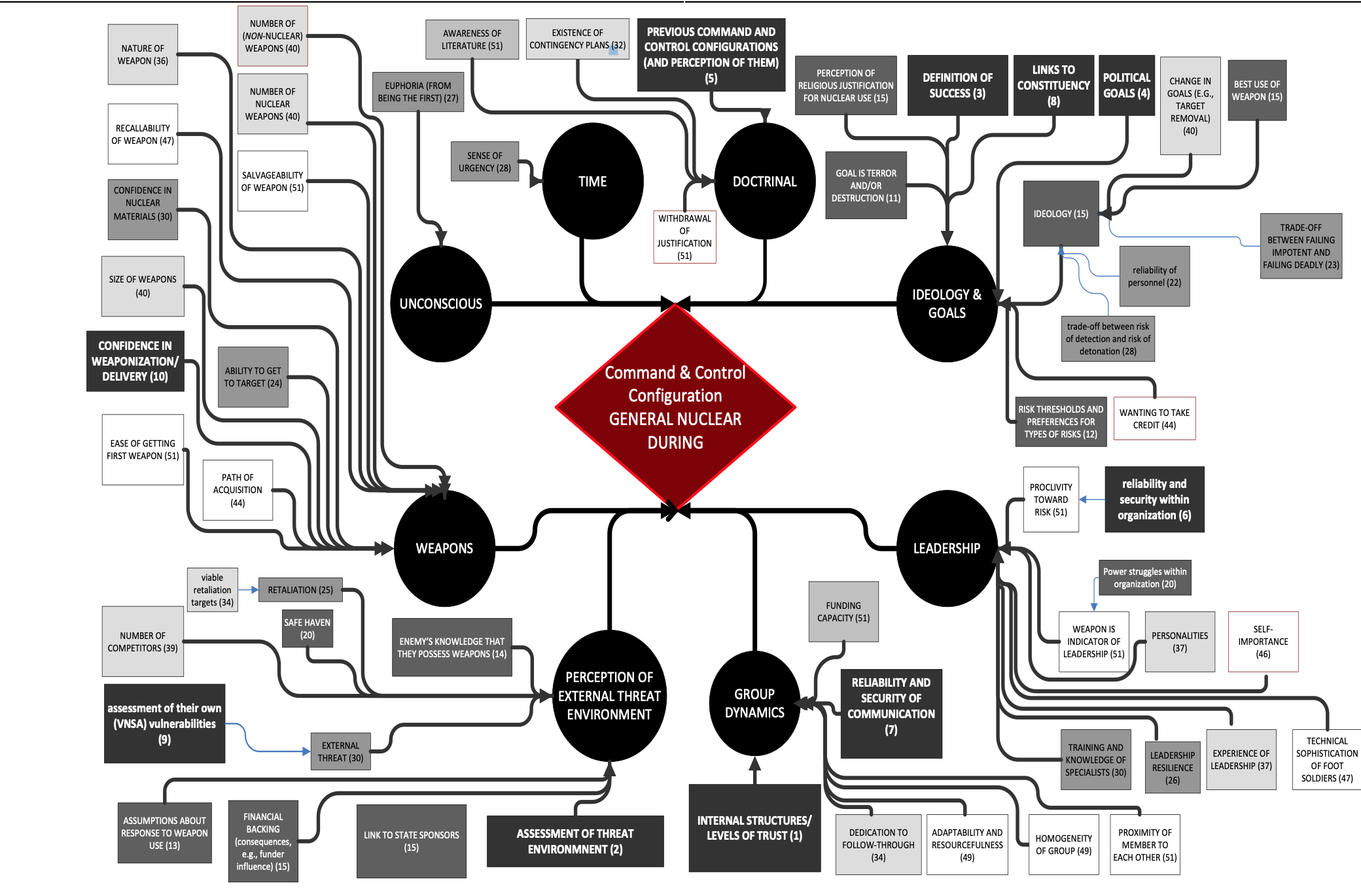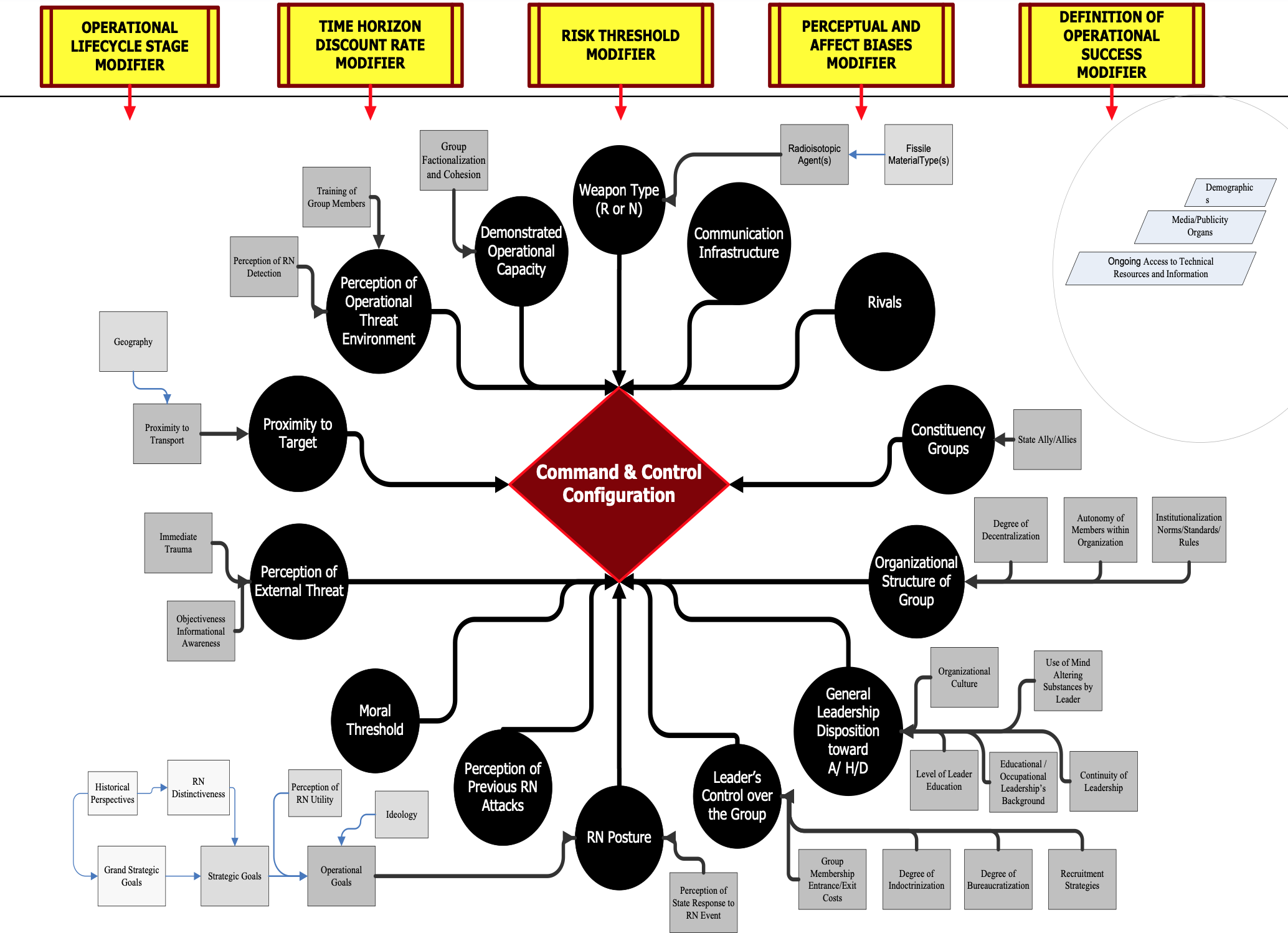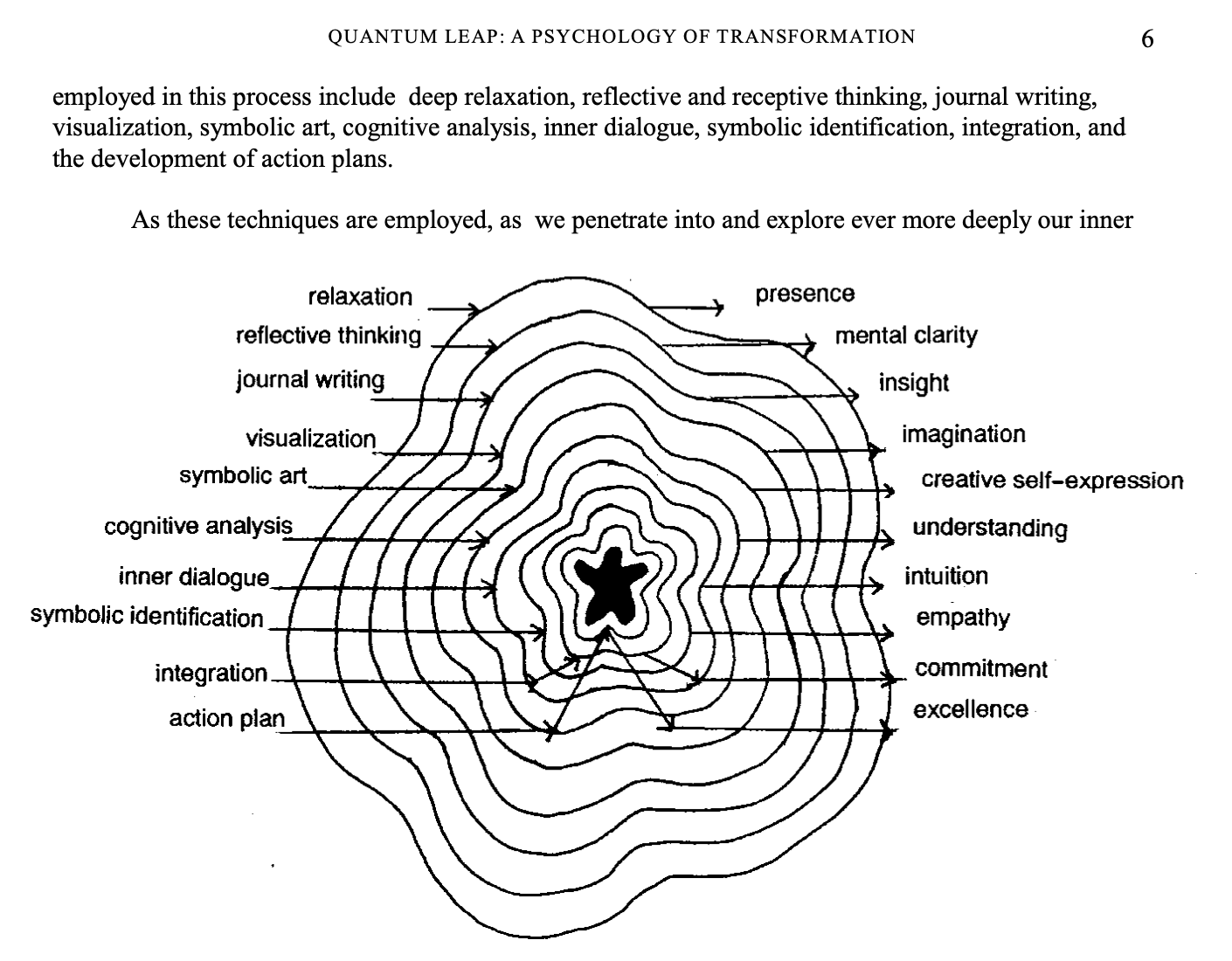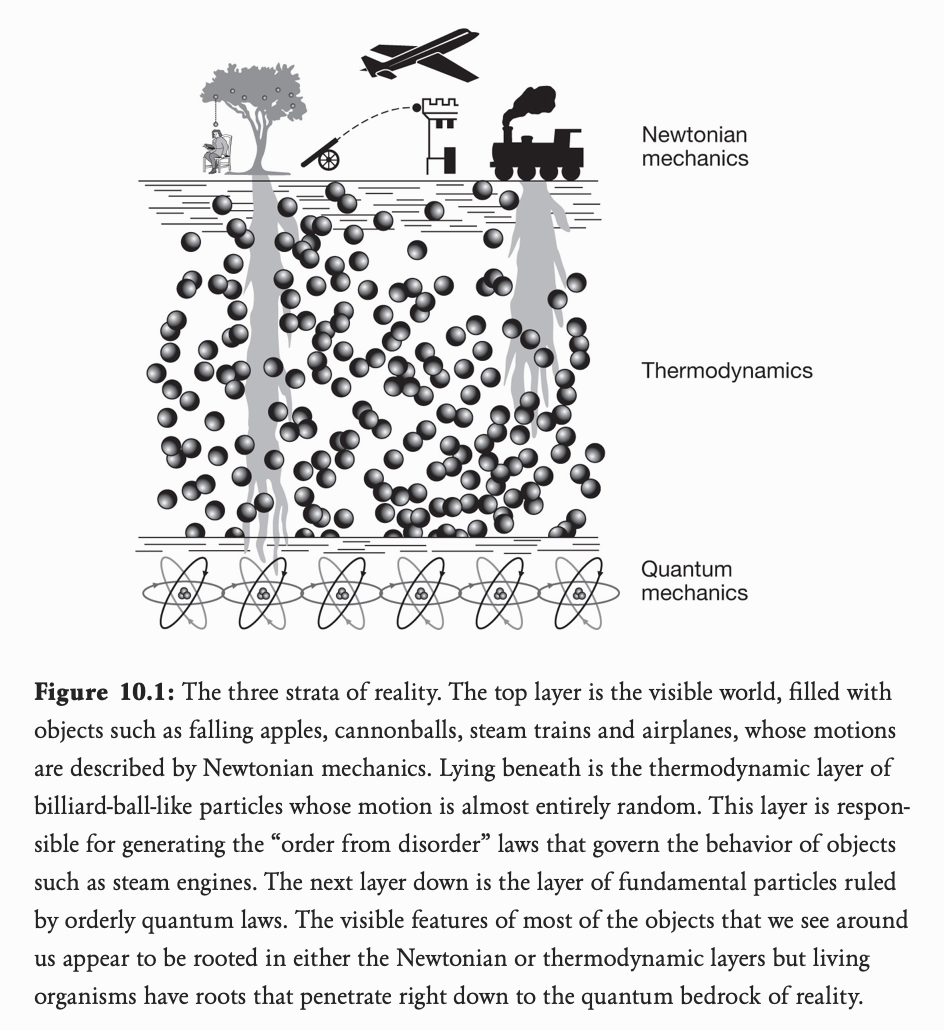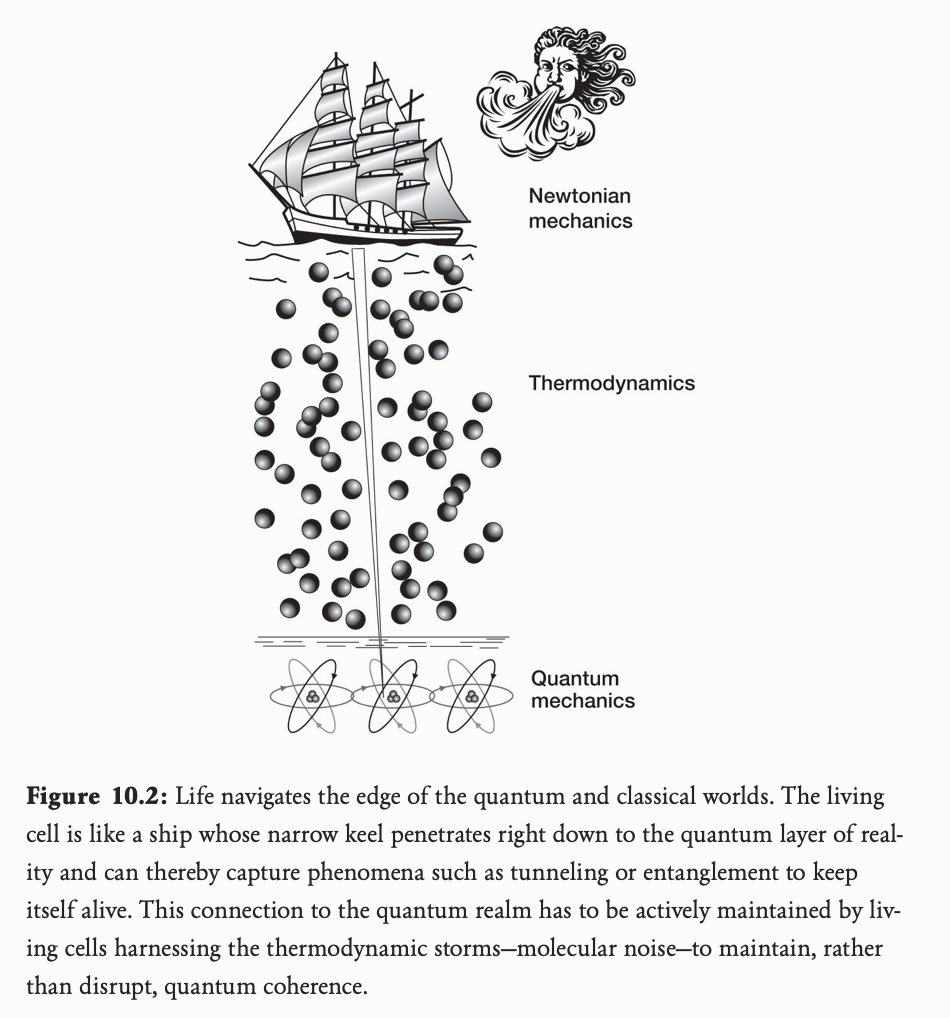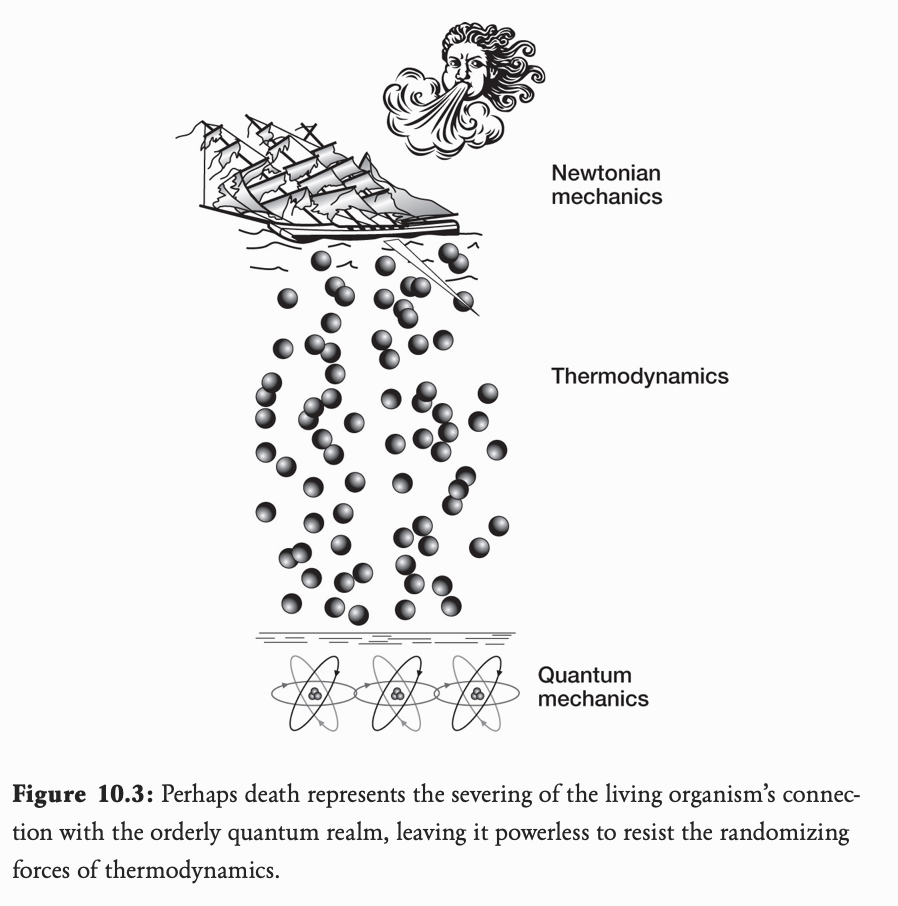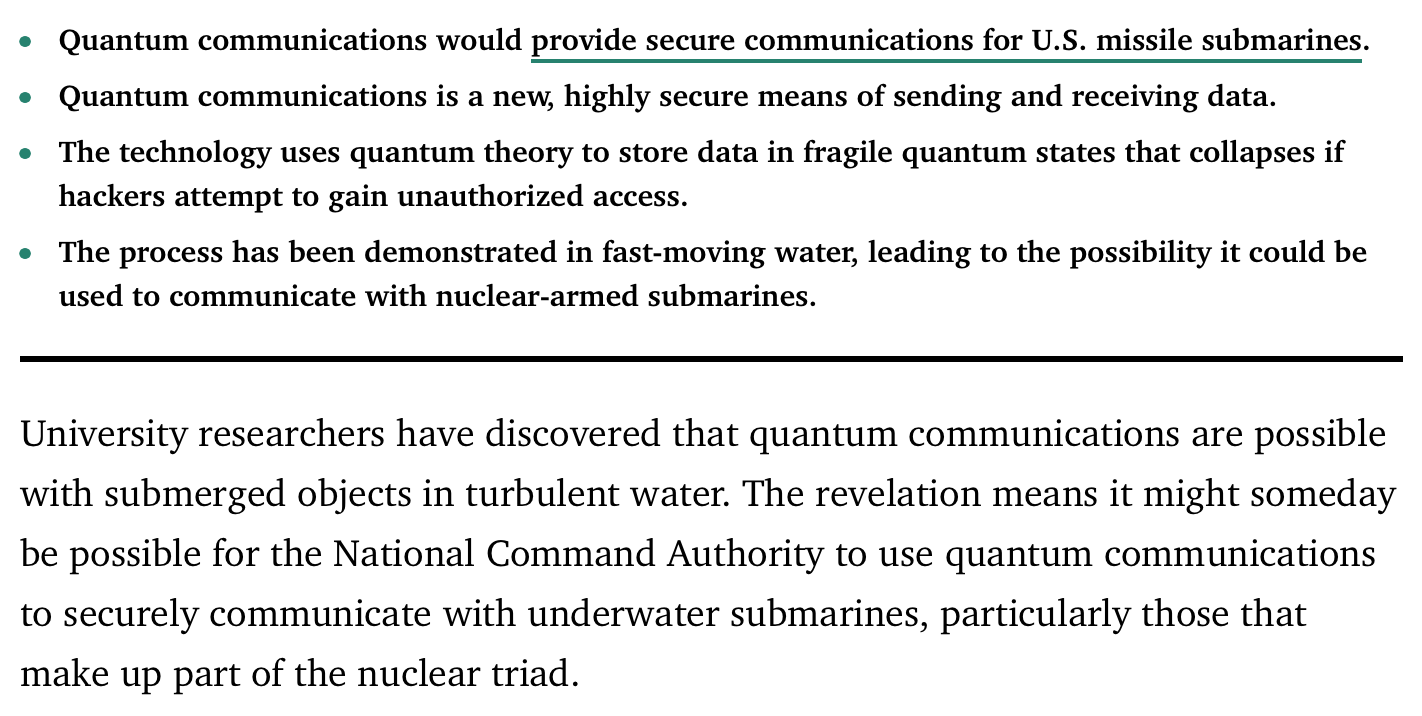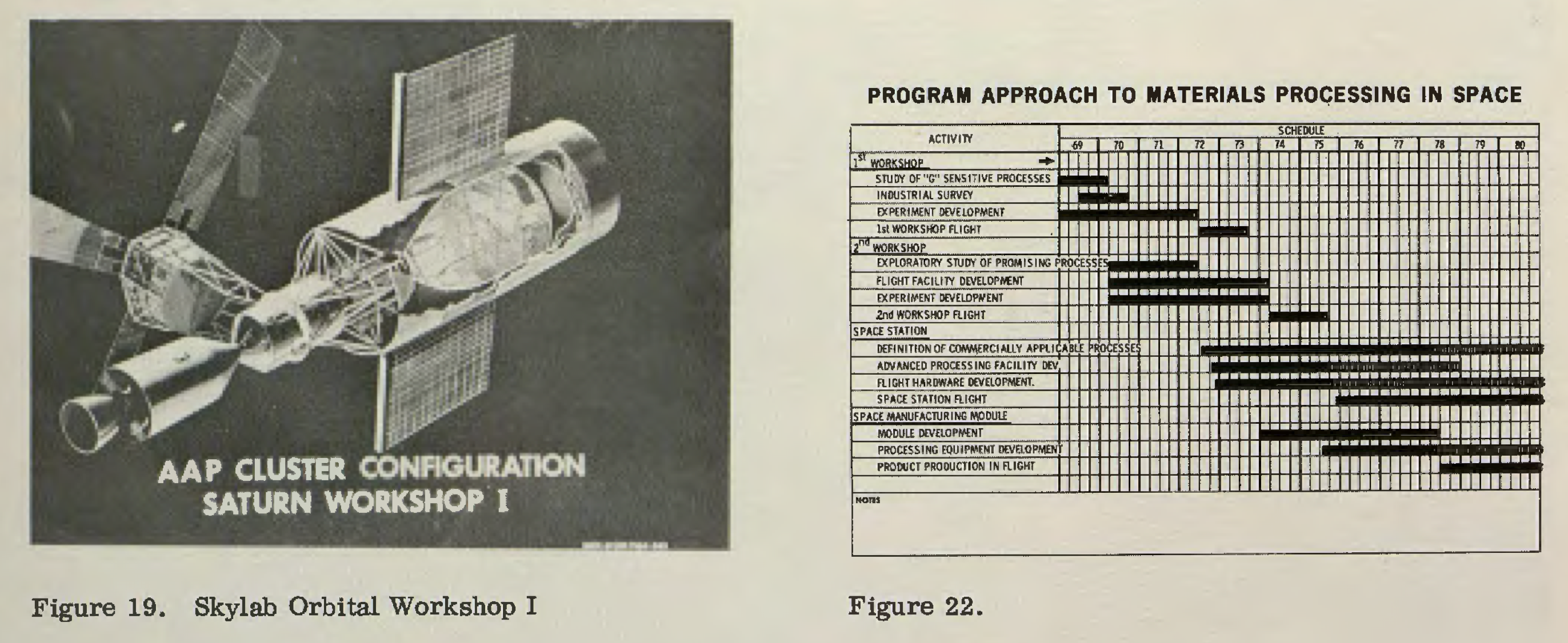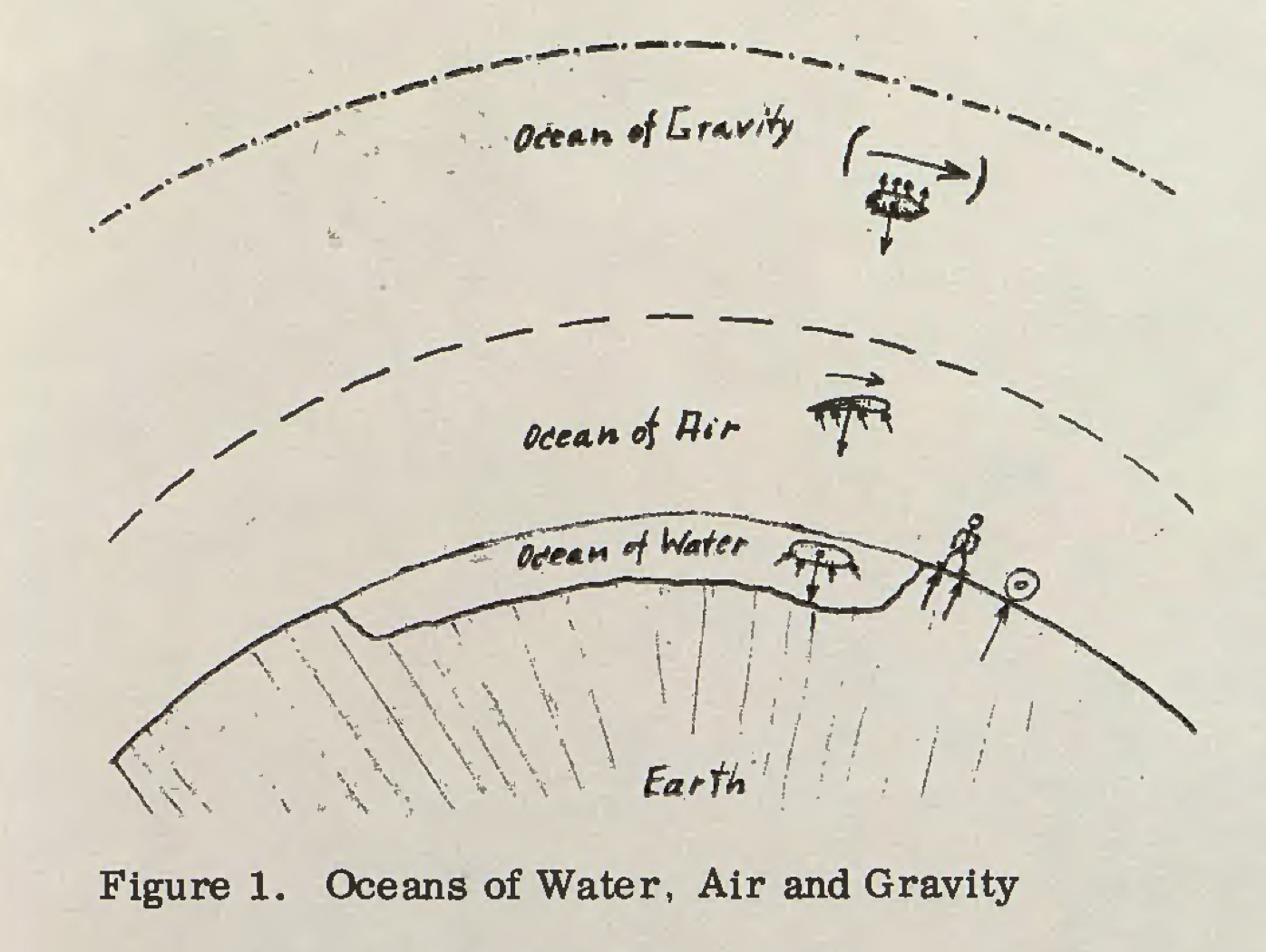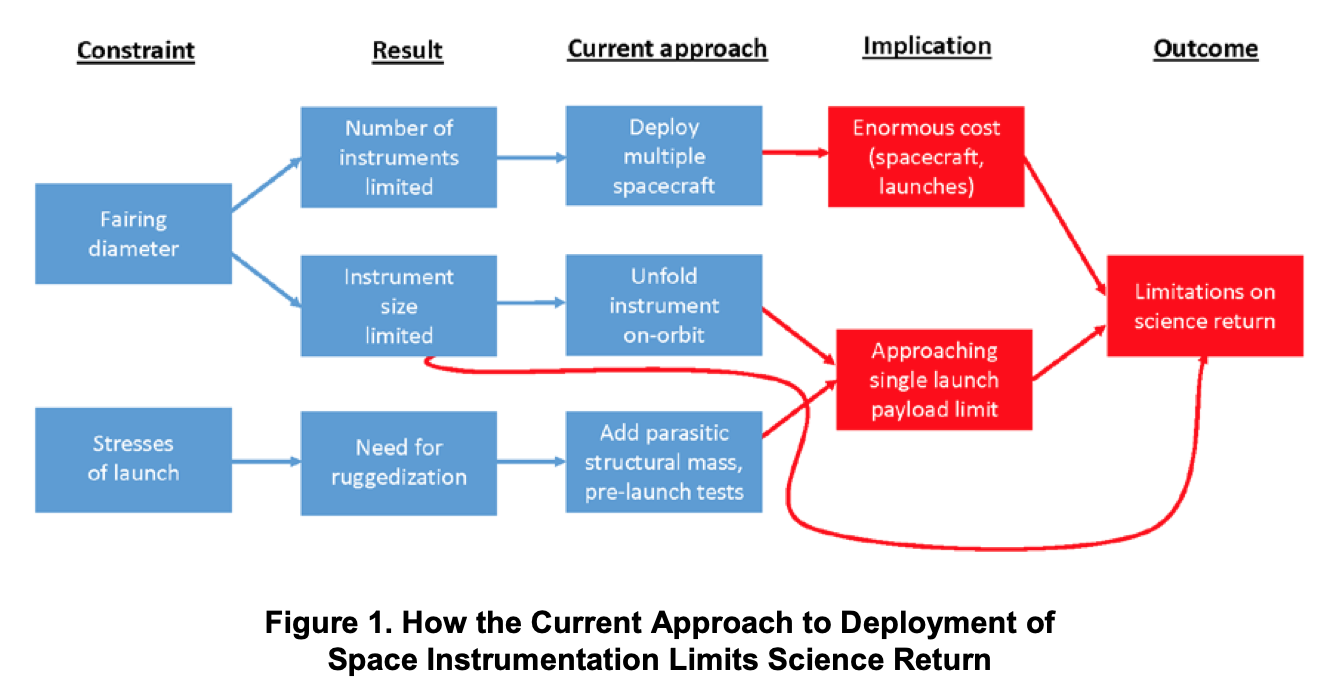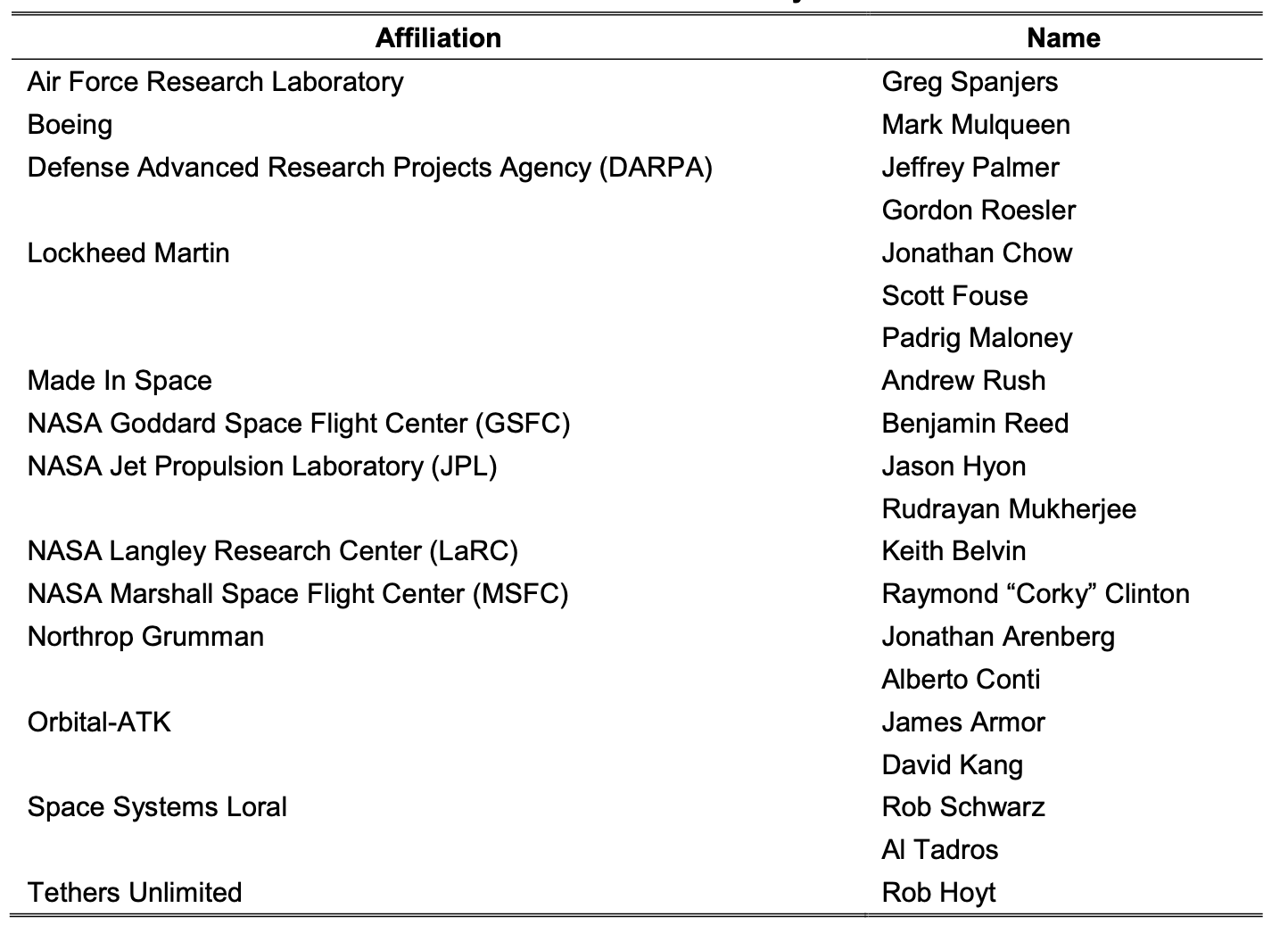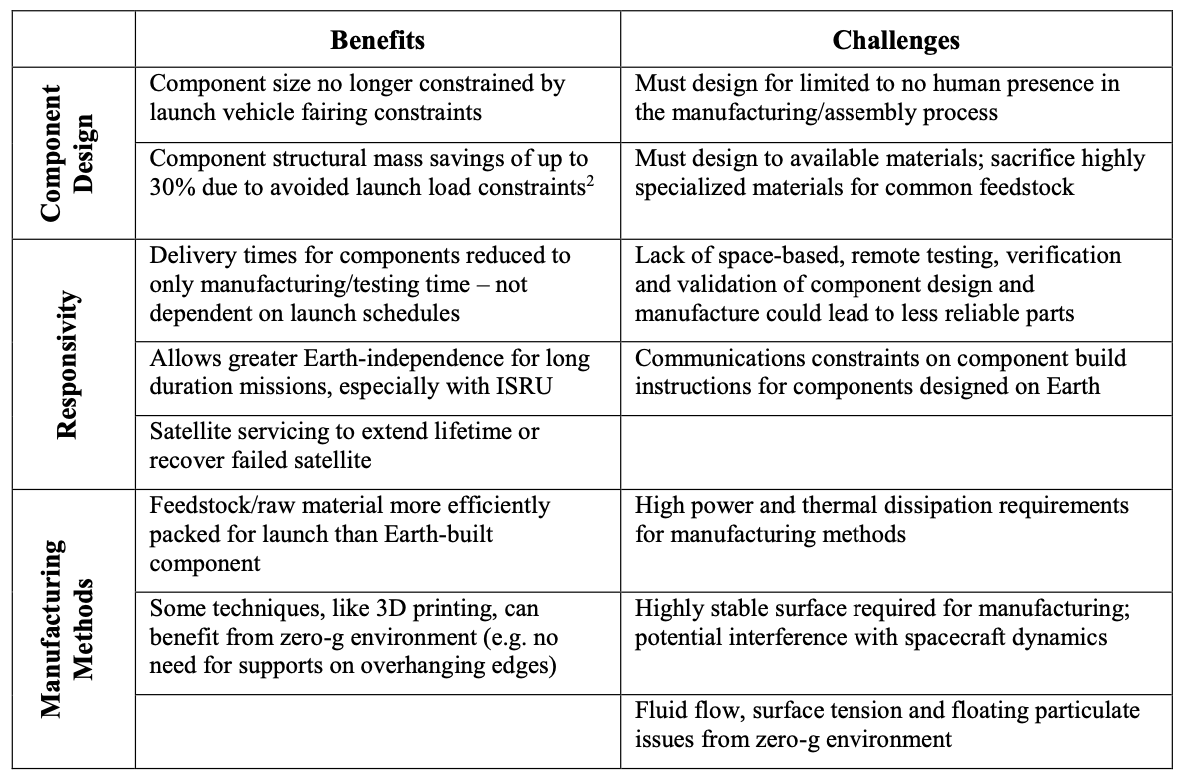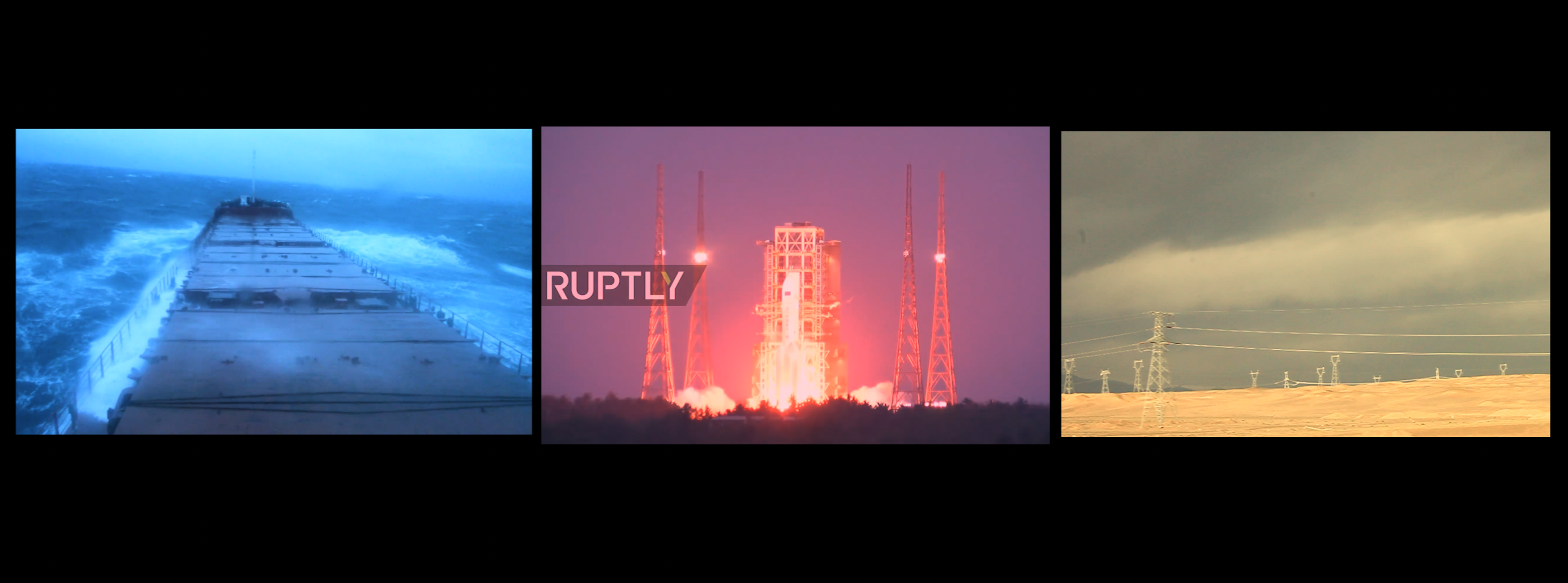Chroma/Cerebellum 1988 2049
American Ocean, Russian Heartland, Chinese Century - a journey into the Cold War colours of the New Silk Road and a future for the New Silk Soul (一带一路 魂)


radial scream
“Listen,” Hilarius said after awhile, “have I seemed to you a good enough Freudian? Have I ever deviated seriously?”
“You made faces now and then,” said Oedipa, “but that’s minor.”
His response was a long, bitter laugh. Oedipa waited. “I tried,” the shrink behind the door said, “to submit myself to that man, to the ghost of that cantankerous Jew. Tried to cultivate a faith in the literal truth of everything he wrote, even the idiocies and contradictions. It was the least I could have done, nicht wahr? A kind of penance.”
“And part of me must have really wanted to believe
—like a child hearing, in perfect safety, a tale of horror
—that the unconscious would be like any other room, once the light was let in. That the dark shapes would resolve only into toy horses and Biedermeyer furniture. That therapy could tame it after all, bring it into society with no fear of its someday reverting. I wanted to believe, despite everything my life had been. Can you
imagine?”
She could not, having no idea what Hilarius had done before
“showing up in Kinneret. Far away she now heard sirens, the electronic kind the local cops used, that sounded like a slide-whistle being played over a PA. system. With linear obstinacy they grew louder.
“Yes, I hear them,” Hilarius said. “Do you think anyone can protect me from these fanatics? They walk through walls. They replicate: you flee them, turn a corner, and there they are, coming for you again.”
“Do me a favor?” Oedipa said. “Don’t shoot at the cops, they’re on your side.”
“Your Israeli has access to every uniform known,” Hilarius said. “I can’t guarantee the safety of the ‘police.’ You couldn’t guarantee where they’d take me if I surrendered, could you.”
“She heard him pacing around his office. Unearthly siren-sounds converged on them from all over the night. “There is a face,” Hilarius said, “that I can make. One you haven’t seen; no one in this country has. I have only made it once in my life, and perhaps today in central Europe there still lives, in whatever vegetable ruin, the young man who saw it. He would be, now, about your age. Hopelessly insane. His name was Zvi. Will you tell the ‘police,’ or whatever they are calling themselves tonight, that I can make that face again? That it has an
effective radius of a hundred yards and drives anyone unlucky enough to see it down forever into the darkened oubliette, among the terrible shapes, and secures the hatch irrevocably above them? Thank you.”
The sirens had reached the front of the clinic. She heard car doors slamming, cops yelling, suddenly a great smash as they broke in. The office door opened then. Hilarius grabbed her by the wrist, pulled her inside, locked the door again.”
“So now I’m a hostage,” Oedipa said.
“Oh,” said Hilarius, “it’s you.”
“Well who did you think you’d been——”
“Discussing my case with? Another. There is me, there are the others. You know, with the LSD, we’re finding, the distinction begins to vanish. Egos lose their sharp edges. But I never took the drug, I chose to remain in relative paranoia, where at least I know who I am and who the others are. Perhaps that is why you also refused to participate, Mrs Maas?” He held the rifle at sling arms and beamed at her. “Well, then. You were supposed to deliver a message to me, I assume. From them. What were you supposed to say?”
Oedipa shrugged. “Face up to your social responsibilities,” she suggested. “Accept the reality principle. You’re outnumbered and they have superior firepower.”
“Ah, outnumbered. We were outnumbered there too.” He watched her with a coy look.
“Where?”
“Where I made that face. Where I did my internship.”
She knew then approximately what he was talking about, but to narrow it said, “Where,” again.
“Buchenwald,” replied Hilarius. Cops began hammering on the office door.
“He has a gun,” Oedipa called, “and I’m in
here.” (The Crying of Lot 49)
Note the Munchen Scream was painted under the effects of coronavirus, Spanish influenza 1918, Munch’s horror, the radial outside, the siniy transmission.
Jarman staring at the ceiling under the effects of latechemo, reds, crystallising above and there’s a Maas like sense“was part of his duty, wasn’t it, to bestow life on what had persisted, to try to be what Driblette was, the dark machine in the centre of the planetarium, to bring the estate into pulsing stelliferous Meaning, all in a soaring dome around him? Mondaugen-like, sferic, and SPHERA, sphera is sferic
Transmission-0. Sphera as Rashomonic/Goluboynetic Massumian Incident exhibiting Bipolarised Psychokinetic Effects
Euphoris, neural forestry, touch entropy, heat but information increasing saturating, Phrenis Schizia waving at the platform ululating 30 years distant light. Points, lines, beams ego light seep laserous, Lazarus. Decision happens: affectively-systemically, in the nonconscious processual autonomous zone where mutually exclusive states come together. The event decides, as it happens. At the decisive moment, the self is no more in a state of determinate activity than it is in a cognitive state. It is absorbed in a readiness potential that is intensely overdetermined, holding, Luhmann says, “a whole range of possible differences” in “sub-threshold latency” (Luhmann 1979, 73). The whole range of potentials are in it together, in their difference. They are in a state of mutual inclusion, on the verge, poised toward the collapse destined to resolve the overdetermination of the and-both into this-not-that determinate effect, registrable in a calculus of risk and probability: from intensity to statistic. “The nonconscious “sub-threshold latency,” churning with the intensity of a mutually inclusive range of potentials, in co-motional intensity, deserves a name of its own: bare activity. No amount of sophisticated modeling will expunge the hard economic fact that under complex conditions of uncertainty rational choice and affect-driven intuition enter a zone of indistinction. To put it another way, “rationality about the unknown requires emotions” (Pixley 2004, 30). This points to an experiential plasticity that belies any notion of an underlying principle of personal preference as having the sovereign power to determine action. What are experienced as satisfying qualities of experience are surprisingly open to situational conditioning. ” Situational Conditioning as Geography. Interpreted in light of the first experiment, the plasticity of moral conviction shown in the second experiment appears as a higher-order recapitulation of a perceptual dynamic. The phenomenon of choice blindness points to a tendency toward fabulation built into perceptual experience. Or more precisely: built into the temporality of our perceptual experience. The self-evidence of our present perception does not stand the test of time. Our memory plays tricks on us. It is becoming increasingly accepted that a memory is not reproduced. Rather, it is regenerated. A memory is always an event, never a representation. The event of memory varies according to the conditions under which it is produced. Personal memory is an evolving dynamic system that is predicated not on reproduction but on re-creation. In the vocabulary of cognitive science, memory is by nature “reconstructive.” This means that the person we are as a function of our memories is self-re-creating. The fabulatory element of perception as it varies over time is a creative factor in life. In its absence, the individual would be an ambulant repetition-compulsion, shackled to a bedrock of past preferences and principles. What would possess me to forgo my tried and true satisfactions? The only way for change to occur would be through the imposition of modified behaviors from without, either in the form of brute conformal force, or through the disciplinary inculcation of norms meant to be interiorized in such as way as to foster conformal behavior even in the absence of force. Priming operates less through stimulus-response than through cues whose force is situational. Priming addresses threshold postures (presuppositions) orienting a participant’s entry into the situation, plus the associated tendencies that carry the orientation forward through the encounter. Accordingly, it does not exercise the same kind of power as normative-disciplinary mechanisms (of which both traditional forms of conditioning are highly distilled forms). It is of the utmost significance that priming depends, on the one hand, on the individual’s susceptibility to its own tendential infra-churnings and, on the other, on its openness to the situation—the individual’s bipolar affectability. Priming operationalizes the cross-sensitivity between the infra- and macropoles
“So does my husband,” she said. “I understand.” John Nefastis beamed at her, simpatico, and brought out his Machine from a workroom in back. It looked about the way the patent had described it. “You know how this works?” Stanley gave me a kind of rundown.” He began then, bewilderingly, to talk about something called entropy. The word bothered him as much as “Trystero” bothered Oedipa. But it was too technical for her. She did gather that there were two distinct kinds of this entropy. One having to do with heat-engines, the other to do with communication. The equation for one, back in the ‘3o’s, had looked very like the equation for the other. It was a coincidence. The two fields were entirely unconnected, except at one point: Maxwell’s Demon. As the Demon sat and sorted his molecules into hot and cold, the system was said to lose entropy. But somehow the loss was offset by the information the Demon gained about what molecules were where. “Communication is the key,” cried Nefastis. “The Demon passes his data on to the sensitive, and the sensitive must reply in kind. There are untold billions of molecules in that box. The Demon collects data on each and every one. At some deep “psychic level he must get through. The sensitive must receive that staggering set of energies, and feed back something like the same quantity of information. To keep it all cycling. On the secular level all we can see is one piston, hopefully moving. One little movement, against all that massive complex of information, destroyed over and over with each power stroke.” “Help,” said Oedipa, “you’re not reaching me.” “Entropy is a figure of speech, then,” sighed Nefastis, “a metaphor. It connects the world of thermo-dynamics to the world of information flow. The Machine uses both. The Demon makes the metaphor not only verbally graceful, but also objectively true.” But what,” she felt like some kind of a heretic, “if the Demon exists only because the two equations look alike? Because of the metaphor?” Nefastis smiled; impenetrable, calm, a believer. “He existed for Clerk Maxwell long before the days of the metaphor.”
Transmission-1. The Black Sea. China, the U.S. and I, I.F. , dancing in the Roche limit of a former Soviet moon
I.F. Transmission 1. The Black Sea.
I now know why Jean Baudrillard called them cool memories. Or why W.G. Sebald fixated on the Roche effect – those ice crystals of a former moon that strayed too closed to Saturn and were destroyed by its tidal effect. Franz Mesmer the strange German doctor-astronomer called those Roche forces that work on us in sleep or fading self awareness the floodabilities, flutbarkeiten. Memory is satelittic, fragmentary, a fall into pixelline heat, Always decompressing, cooling. Just as the past is not a static but Roche flickers caught on the tide In June 2018, I set off with three people across the New Silk Roads, the land-based Silk Road Economic Belt of China’s 1 trillion infrastructure project stretching through Central Asia to Europe. We began on the edge, under the hothouse of Russian pressure Anaklia:
Georgia – Poti Free Industrial Zone, Anaklia Development Consortium and Deep Water Port (26 – 30 June) || Azerbaijan – Baku International Sea Trade Port Alyat (Phase II) (01 – 07 July 2018) || Kazakhstan – Aktau Economic Hub (08 – 12 July 2018) || Kyrgyzstan – Kyrgyzstan-China gas pipeline and Bishkek Power Station (13 – 16 July 2018) || Kazakhstan – Almaty and Khorgos Gateway and Dry Port (16 – 21 July 2018) || Xinjiang International Logistics Park (21 – 24 July 2018) || Lanzhou New Area Free Trade Zone (25 – 27 July 2018); || Xi’an International Trade and Logistics Park (27 – 29 July 2018); || Chengdu Hi-Tech Industrial Development Zone (29 – 30 July 2018); Chongqing-Chengdu city cluster (31 July – 01 August 2018) ||Yiwu Wholesales Market (02 August – 04 August 2018); || Shanghai (04 August – 06 August 2018); || Beijing (06 – 10 August 2018); and || Hong Kong (10 August – 15 August 2018). We interviewed experts, in suits, I took photos, videos, I came home and started a job at Forensic Architecture, a research agency undertaking media and architectural investigations in conflict zones. I let the trip decompress, as summers do, into cool freight. At the beginning of 2019, I bought a website domain, blip.land, the blip I imagined was that transience of the passage, a blip on a radar, and yet the concrete of the opinion of a place we form. Blip is that world becoming distant, becoming fuselage to the gait. Crank up the heat in the hothouse of misunderstanding. Life is depth in black sea, death is blip, stay on the machine. Memory is satelittic, but we forget where we were when they were launched.
Where were you when the engines flooded kerosene and the clouds exploded grey? Long march 5 becoming godly red hue, streaking the angel line, contrails burning up, on a cornea, an iris, the controlled trauma, becoming cool memory in blinding heat. According to Zinchenko, Russia is a space where the horizontal and the vertical, expansiveness and outer space, intersect. America controlling the skies, the ocean, always a strong horizontalism to the American psyche – to push the envelope, to convert hearts, to eulogise, to evangelise, given wings on the oceanic currents, the airwaves. The Belt and Road is not so much horizontal, as a sensoria of speed, transmission, signal into the sky and the fragments that sink satellitic into the psyche, the pixelline blothouse, the Black Sea.
The New Silk Road [sic] New Space Race
China’s Pursuit of Space Power Status and Implications for the United States (Alexander Bowe, US-China Economic and Security Review Commission, April 2019): https://www.uscc.gov/sites/default/fi… The Changing Dynamics of Twenty First Century Space Power (James Clay Moltz, 2019): https://www.airuniversity.af.edu/Port… China in Space: The Great Leap Forward (Brian Harvey 2019):
https://books.google.co.uk/books?hl=e…
Transmission-2. The Bicameral Mind of a Cold War Blue
August 18, 1988, Louisiana Superdome, New Orleans | George H.W. Bush acceptance speech as the Republican presidential candidate at the 1988 Republican National Convention.
My approach this evening is, as Sergeant Joe Friday used to say, “Just the facts, ma’m.” After all, the facts are on our side. I seek th-e presidency for a single purpose, a purpose that has motivated millions of Americans across the years and the ocean voyages. I seek the presidency to build a better America. It is that simple – and that big. I am a man who sees life in terms of missions – missions defined and missions completed. When I was a torpedo bomber pilot they defined the mission for us. Before we took off we all understood that no matter what, you try to reach the target. There have been other missions for me – Congress, China, the CIA. But I am here tonight – and I am your candidate – because the most important work of my life is to complete the mission we started in 1980. How do we complete it? We build it. The stakes are high this year and the choice is crucial, for the differences between the two candidates are as deep and wide as they have ever been in our long history. Not only two very different men, but two very different ideas of the future will be voted on this election day. What it all comes down to is this: My opponent’s view of the world sees a long slow decline for our country, an inevitable fall mandated by impersonal historical forces. But America is not a decline. America is a rising nation. He sees America as another pleasant country on the UN roll call, somewhere between Albania and Zimbabwe. I see America as the leader – a unique nation with a special role in the world. This has been called the American Century, because in it we were the dominant force for good in the world. We saved Europe, cured polio, we went to the moon, and lit the world with our culture. Now we are on the verge of a new century, and what country’s name will it bear? I say it will be another American century. Our work is not done – our force is not spent. There are those who say there isn’t much of a difference this year. But America, don’t let ’em fool ya. Two parties this year ask for your support. Both will speak of growth and peace. But only one has proved it can deliver. Two parties this year ask for your trust, but only one has earned it. Eight years ago I stood here with Ronald Reagan and we promised, together, to break with the past and return America to her greatness. Eight years later look at what the American people have produced: the highest level of economic growth in our entire history – and the lowest level of world tensions in more than fifty years.
[…] But let’s be frank. Things aren’t perfect in this country. There are people who haven’t tasted the fruits of the expansion. I’ve talked to farmers about the bills they can’t pay. I’ve been to the factories that feel the strain of change. I’ve seen the urban children who play amidst the shattered glass and shattered lives. And there are the homeless. And you know, it doesn’t do any good to debate endlessly which policy mistake of the ’70’s is responsible. They’re there. We have to help them. But what we must remember if we are to be responsible – and compassionate – is that economic growth is the key to our endeavors. I want growth that stays, that broadens, and that touches, finally, all Americans, form the hollows of Kentucky to the sunlit streets of Denver, from the suburbs of Chicago to the broad avenues of New York, from the oil fields of Oklahoma to the farms of the great plains. Can we do it? Of course we can. We know how. We’ve done it. If we continue to grow at our current rate, we will be able to produce 30 million jobs in the next eight years. We will do it – by maintaining our commitment to free and fair trade, by keeping government spending down, and by keeping taxes down. Our economic life is not the only test of our success, overwhelms all the others, and that is the issue of peace. One issue Look at the world on this bright August night. The spirit of Democracy is sweeping the Pacific rim. China feels the winds of change. New democracies assert themselves in South America. One by one the unfree places fall, not to the force of arms but to the force of an idea: freedom works. We have a new relationship with the Soviet Union. The INF treaty – the beginning of the Soviet withdrawal from Afghanistan – the beginning of the end of the Soviet proxy war in Angola, and with it the independence of Namibia. Iran and Iraq move toward peace. It is a watershed. It is no accident. It happened when we acted on the ancient knowledge that strength and clarity lead to peace – weakness and ambivalence lead to war. Weakness and ambivalence lead to war. Weakness tempts aggressors. Strength stops them. I will not allow this country to be made weak again. The tremors in the Soviet world continue. The hard earth there has not yet settled. Perhaps what is happening will change our world forever. Perhaps what is happening will change our world forever. Perhaps not. A prudent skepticism is in order. And so is hope. Either way, we’re in an unprecedented position to change the nature of our relationship. Not by preemptive concession – but by keeping our strength. Not by yielding up defense systems with nothing won in return – but by hard cool engagement in the tug and pull of diplomacy. My life has been lived in the shadow of war – I almost lost my life in one. I hate war. I love peace. We have peace. And I am not going to let anyone take it away from us. Our economy is strong but not invulnerable, and the peace is broad but can be broken. And now we must decide. We will surely have change this year, but will it be change that moves us forward? Or change that risks retreat?
Transmission-3a. American Ocean, Russian Heartland: summer, 1962 and the New Silk Roads, children of the atom.
He’s riding a U2 stealth plane at 70,000ft over far eastern Soviet reds in a telluric sunrise / Pacific blue washing into the secret arc / Over Semipalatinsk test site in cartridges loaded / dreaming of the atom / fissile heat / throwing up soviet dirt in the Kazakh desert / He sights the colours change deep down below / To landlock yellows, reds and greens / Marian back home, cooking in colour television, / He senses his part in some way abstract / To the atomic summer of 1962 / Slamming into the Siberian coastline / the power of the American ocean gifting light / To the dark regions of this land unfree / Under the stealth hum of the engines / The drowned out clicks of black film cartidges loading.
1960 U-2 incident
On 1 May 1960, a United States U-2 spy plane was shot down by the Soviet Air Defence Forces while performing photographic aerial reconnaissance deep into Soviet territory. The single-seat aircraft, flown by pilot Francis Gary Powers, was hit by an S-75 Dvina (SA-2 Guideline) surface-to-air missile and crashed near Sverdlovsk (today’s Yekaterinburg). Powers parachuted safely and was captured. Initially, the US authorities acknowledged the incident as the loss of a civilian weather research aircraft operated by NASA, but were forced to admit the mission’s true purpose when a few days later the Soviet government produced the captured pilot and parts of the U-2’s surveillance equipment, including photographs of Soviet military bases taken during the mission. The incident occurred during the presidency of Dwight D. Eisenhower and the premiership of Nikita Khrushchev, around two weeks before the scheduled opening of an east–west summit in Paris. It caused great embarrassment to the United States and prompted a marked deterioration in its relations with the Soviet Union, already strained by the ongoing Cold War On 28 April 1960, a U.S. Lockheed U-2C spy plane, Article 358, was ferried from Incirlik Air Base in Turkey to the US base at Peshawar airport by pilot Glen Dunaway. Fuel for the aircraft had been ferried to Peshawar the previous day in a US Air Force C-124 transport. A US Air Force C-130 followed, carrying the ground crew, mission pilot Francis Powers, and the back up pilot, Bob Ericson. On the morning of 29 April, the crew in Badaber was informed that the mission had been delayed one day. As a result, Bob Ericson flew Article 358 back to Incirlik and John Shinn ferried another U-2C, Article 360,[7] from Incirlik to Peshawar. On 30 April, the mission was delayed one day further because of bad weather over the Soviet Union.[6] The weather improved and on 1 May, 15 days before the scheduled opening of the east–west summit conference in Paris, Captain Powers, flying Article 360, 56–6693 left the base in Peshawar on a mission with the operations code word GRAND SLAM[8] to overfly the Soviet Union, photographing targets including the ICBM sites at the Baikonur Cosmodrome and Plesetsk Cosmodrome, then land at Bodø in Norway. At the time, the USSR had six ICBM launch pads, two at Baikonur and four at Plesetsk.[9] Mayak, then named Chelyabinsk-65, an important industrial center of plutonium processing, was another of the targets that Powers was to photograph.[10] A close study of Powers’s account of the flight shows that one of the last targets he overflew, before being shot down, was the Chelyabinsk-65 plutonium production facility.[11] The U-2 flight was expected, and all units of the Soviet Air Defence Forces in the Central Asia, Kazakhstan, Siberia, Ural, and later in the USSR European Region and Extreme North, were placed on red alert. Soon after the plane was detected, Lieutenant General of the Air Force Yevgeniy Savitskiy ordered the air-unit commanders “to attack the violator by all alert flights located in the area of foreign plane’s course, and to ram if necessary”.[12] Because of the U-2’s extreme operating altitude, Soviet attempts to intercept the plane using fighter aircraft failed. The U-2’s course was out of range of several of the nearest SAM sites, and one SAM site even failed to engage the aircraft since it was not on duty that day. The U-2 was eventually brought down near Kosulino, Ural Region, by the first of three SA-2 Guideline (S-75 Dvina) surface-to-air missiles[13] fired by a battery commanded by Mikhail Voronov.[6] The SA-2 site had been previously identified by the CIA, using photos taken during Vice President Richard Nixon’s visit to Sverdlovsk the previous summer.[14][15] Powers bailed out but neglected to disconnect his oxygen hose first and struggled with it until it broke, enabling him to separate from the aircraft. After parachuting safely down onto Russian soil, Powers was quickly captured.[12] Powers carried with him a modified silver dollar which contained a lethal, shellfish-derived saxitoxin-tipped needle, but he did not use it.[16] Upon his capture, Gary Powers told his Soviet captors what his mission had been and why he had been in Soviet airspace. He did this in accordance with orders that he had received before he went on his mission.[41] Powers pleaded guilty and was convicted of espionage on 19 August and sentenced to three years imprisonment and seven years of hard labor. He served one year and nine months of the sentence before being exchanged for Rudolf Abel on 10 February 1962.[3] The exchange occurred on the Glienicke Bridge connecting Potsdam, East Germany, to West Berlin.[51]
April 30 2016. A Russian nuclear submarine, Severodvinsk, has carried out firing drills in the Barents Sea, successfully striking a coastal target in the Arctic with the latest Kalibr cruise missile from a submerged position. The crew of the latest multipurpose nuclear submarine of the Northern Fleet, Project 885 Severodvinsk, successfully launched the missile from the Barents Sea, the Russian military said in a statement. The missile hit its target in the Arkhangelsk region “with high accuracy”, the statement added. The strike was conducted as part of wider navy combat drills in the area. The ministry also noted that Severodvinsk, which sailed to sea earlier this week, has carried out a number of other drills within the winter framework training exercises of Russia’s Northern Fleet. Russian Kalibr missiles were also tested on the Caspian Flotilla during week-long drills that involved some 20 vessels and concluded on Friday. “A strike group of the flotilla has conducted firing drills using naval practice targets and hit them successfully,” the press service said. Ships with the Russian Navy’s Caspian Flotilla fired off 3M-14 submarine-launched cruise missiles (SLCM) for the first time on Islamic State targets in Syria on October 7 and November 20. Ever since the debut, the Kalibr became one of the main perceived threats to US security. The Office of Naval Intelligence (ONI) said in December that it“is profoundly changing [Russia’s] ability to deter, threaten or destroy adversary targets.” With a range of roughly of 2,000 km, the supersonic 3M-54 Kalibr missile is small enough to be carried by submarines and small warships. Furthermore the missile is capable of carrying both a conventional or nuclear warhead and is able to penetrate the enemy’s missile defense systems thus changing the calculus of the reach and effectiveness of smaller navy ships.
Transmission-3b. The Man in the High Castle (Philip K. Dick, 1962)
Transmission-3c. Solaris (Stanislaw Lem, 1961)
The planet orbits two suns: a red sun and a blue sun. For 45 years after its discovery, no spacecraft had visited Solaris. From where I was, I could see only a part of the corridor encircling the laboratory. I was at the summit of the Station, beneath the actual shell of the superstructure; the walls were concave and sloping, with oblong windows a few yards apart. The blue day was ending, and, as the shutters grated upwards, a blinding light shone through the thick glass. Every metal fitting, every latch and joint, blazed, and the great glass panel of the laboratory door glittered with pale coruscations. I got up. The disc of the sun, reminiscent of a hydrogen explosion, was sinking into the ocean

Transmission-3d. The Three Body Problem (Liu Cixin, 2008)

And now, the Sun really was melting, its blood seeping into the deadly plane. This was the last sunset.
Transmission-4a. Alexander Dugin Shanghai Lectures (2018) Eurasianism 欧亚大陆

Eurasianism 欧亚大陆 Principles, Theories, Geopolitics 原则, 理论,地缘政治
Eurasia = geographical concept (Europe – small, Asia – big)
Eurasia = Land Power, Heartland of Mackinder (opposed to Sea Power and atlanticism)
Eurasia = Turan, Step’, nomadic part to the north from China, India, Persia, Greece
Eurasia = Russia as country
Eurasia = Russia as Empire, USSR, Post-Soviet space
Eurasia = Russia as civilization (slavo-turk, European/Asian)
Eurasia = Idea of unified diversity (Empire of Middle)
Eurasia = one pole of multipolar world
Extract from Last War of the World Island: The Geopolitics of Contemporary Russia (Dugin, 2015 pages 16-18)
The Russian Federation is in the Heartland. The historical structure of Russian society displays vividly expressed tellurocratic traits. Without hesitation, we should associate the Russian Federation, too, with a government of the land-based type, and contemporary Russian society with a mainly holistic society. The consequences of this geopolitical identification are global in scale. On its basis, we can make a series of deductions, which must lie at the basis of a consistent and fully-fledged Russian geopolitics of the future.
1. Russia’s geopolitical identity, being land-based and tellurocratic, demands strengthening, deepening, acknowledgement, and development. The substantial side of the policy of affirming political sovereignty, declared in the early 2000s by the President of the Russian Federation, Vladimir Putin, consists in precisely this. Russia’s political sovereignty is imbued with a much deeper significance: it is the realization of the strategic project for the upkeep of the political-administrative unity of the Heartland and the (re)creation of the conditions necessary for Russia to act as the tellurocratic pole on a global scale. In strengthening Russia’s sovereignty, we strengthen one of the columns of the world’s geopolitical architecture; we carry out an operation, much greater in scale than a project of domestic policy concerning only our immediate neighbors, in the best case. Geopolitically, the fact that Russia is the Heartland makes its sovereignty a planetary problem. All the powers and states in the world that possess tellurocratic properties depend on whether Russia will cope with this historic challenge and be able to preserve and strengthen its sovereignty.
2. Beyond any ideological preferences, Russia is doomed to conflict with the civilization of the Sea, with thalassocracy, embodied today in the USA and the unipolar America-centric world order. Geopolitical dualism has nothing in common with the ideological or economic peculiarities of this or that country. A global geopolitical conflict unfolded between the Russian Empire and the British monarchy, then between the socialist camp and the capitalist camp. Today, during the age of the democratic republican arrangement, the same conflict is unfolding between democratic Russia and the bloc of the democratic countries of NATO treading upon it. Geopolitical regularities lie deeper than political-ideological contradictions or similarities. The discovery of this principal conflict does not automatically mean war or a direct strategic conflict. Conflict can be understood in different ways. From the position of realism in international relations, we are talking about a conflict of interests which leads to war only when one of the sides is sufficiently convinced of the weakness of the other, or when an elite is put at the head of either state that puts national interests above rational calculation. The conflict can also develop peacefully, through a system of a general strategic, economic, technological, and diplomatic balance. Occasionally it can even soften into rivalry and competition, although a forceful resolution can never be consciously ruled out. In such a situation the question of geopolitical security is foremost, and without it no other factors — modernisation, an increase in the Gross Domestic Product (GDP) or the standard of living, and so forth — have independent significance. What is the point of our creating a developed economy if we will lose our geopolitical independence? This is not “bellicose,” but a healthy rational analysis in a realist spirit; this is geopolitical realism.
3. Geopolitically, Russia is something more than the Russian Federation in its current administrative borders. The Eurasian civilization, established around the Heartland with its core in the Russian narod, is much broader than contemporary Russia. To some degree, practically all the countries of the Commonwealth of Independent States (CIS) belong to it. Onto this sociological peculiarity, a strategic factor is superimposed: to guarantee its territorial security, Russia must take military control over the center of the zones attached to it, in the south and the west, and in the sphere of the northern Arctic Ocean. Moreover, if we consider Russia — a planetary tellurocratic pole, then it becomes apparent that its direct interests extend throughout the Earth and touch all the continents, seas, and oceans. Hence, it becomes necessary to elaborate a global geopolitical strategy for Russia, describing in detail the specific interests relating to each country and each region.
Transmission-4b. Chinese Nuclear Testing 1966.
Two Bombs, One Satellite (Chinese: 两弹一星; pinyin: Liǎngdàn Yīxīng) was an early nuclear and space project of the People’s Republic of China. Two Bombs refers to the atomic bomb (and later the hydrogen bomb) and the intercontinental ballistic missile (ICBM), while One Satellite refers to the artificial satellite. China tested its first atomic bomb and hydrogen bomb in 1964 and 1967 respectively, and successfully launched its first satellite (DFH-1) in 1970.[1][2] 23 scientists involved in the project were awarded the Two Bombs and One Satellite Merit Award (Chinese: 两弹一星功勋奖章) in 1999.[3][4] In 2015, the Two Bombs, One Satellite Memorial Museum was opened on the Huairou campus of the University of the Chinese Academy of Sciences.[5]
28 December 1966 China conducts its fifth nuclear test. This boosted-fission atmospheric test is done with a tower-mounted device to confirm the design principles of a two-stage nuclear device. The explosive yield is between 300 kilotons and 500 kilotons of TNT. — John Wilson Lewis and Xue Litai, China Builds the Bomb (Stanford, California: Stanford University Press, 1988), pp. 201, 244; Xiaoping Yang, Robert North and Carl Romney, “CMR Nuclear Explosion Database (Revision 3): CMR Technical Report CMR-00/16,” August 2000, www.rdss.info; US Army Space and Missile Defense Command Monitoring Research Program “Nuclear Explosion Database,” www.rdss.info.
27 October 1966 China conducts its fourth nuclear test. This atmospheric test uses the Dongfeng-2, a medium-range ballistic missile, which is launched from Shuangchengzi to Lop Nur. The explosive yield is between 12 kilotons and 30 kilotons of TNT. — John Wilson Lewis and Xue Litai, China Builds the Bomb (Stanford, California: Stanford University Press, 1988), pp. 202-203, 209, 212, 244; Xiaoping Yang, Robert North and Carl Romney, “CMR Nuclear Explosion Database (Revision 3): CMR Technical Report CMR-00/16,” August 2000, www.rdss.info; US Army Space and Missile Defense Command Monitoring Research Program “Nuclear Explosion Database,” www.rdss.info.
9 May 1966 China conducts its third nuclear test. This is an atmospheric test of a boosted fission device (U-235 and Lithium-6) that is air-dropped by an H-6 bomber and has an explosive yield of between 200 kilotons and 300 kilotons of TNT. — John Wilson Lewis and Xue Litai, China Builds the Bomb (Stanford, California: Stanford University Press, 1988), pp. 201, 244; Xiaoping Yang, Robert North and Carl Romney, “CMR Nuclear Explosion Database (Revision 3): CMR Technical Report CMR-00/16,” August 2000, www.rdss.info; US Army Space and Missile Defense Command Monitoring Research Program “Nuclear Explosion Database,” www.rdss.info.
14 May 1965 China conducts its second nuclear test. This test is an atmospheric test of a fission (U-235) device, air-dropped by an H-6 bomber, and has an explosive yield of between 20 kilotons and 40 kilotons of TNT. — John Wilson Lewis and Xue Litai, China Builds the Bomb (Stanford, California: Stanford University Press, 1988), p.244; Xiaoping Yang, Robert North and Carl Romney, “CMR Nuclear Explosion Database (Revision 3): CMR Technical Report CMR-00/16,” August 2000, www.rdss.info; US Army Space and Missile Defense Command Monitoring Research Program “Nuclear Explosion Database,” www.rdss.info.
Source: China Nuclear Chronology (https://media.nti.org/pdfs/china_nuclear_3.pdf)
Transmission-5. River Elegy 河殇 1988. Oceanic Blue Yellow River Silt.
River Elegy (Chinese: 河殇; pinyin: Héshāng) was a six-part documentary shown on China Central Television in 1988 which portrayed the decline of traditional Chinese culture. The film asserted that the Ming Dynasty’s ban on maritime activities alluded to the building of the Great Wall by China’s first emperor Ying Zheng. China’s land-based civilization was defeated by maritime civilizations backed by modern sciences, and was further challenged with the problem of life and death ever since the latter half of the 19th century, landmarked by the Opium War. Using the analogy of the Yellow River, China was portrayed as once at the forefront of civilization, but subsequently dried up due to isolation and conservatism. Rather, the revival of China must come from the flowing blue seas which represent the explorative, open cultures of the West and Japan. River Elegy caused immense controversy in mainland China due to its negative portrayal of Chinese culture. Rob Gifford, a National Public Radio journalist, said that the film used images and interviews to state that the concept of “the Chinese being a wonderful ancient people with a wonderful ancient culture was a big sham, and that the entire population needed to change.” Gifford said that the film’s most significant point was its attack on the Yellow River, a river which was a significant element of China’s historical development and which symbolizes ancient Chinese culture.
Using the ancient Chinese saying that “a dipperful of Yellow River water is seven-tenths mud,” the authors of the film use the river’s silt and sediment as a metaphor for Confucian traditions and the significance of the traditions which the authors believe caused China to stagnate. The authors hoped that Chinese traditional culture would end and be replaced by Western culture. The film symbolizes Chinese thinking with the “yellowness” of the Yellow River and Western thinking with the “blueness” of the ocean. The film also criticized the Great Wall, saying that it “can only represent an isolationist, conservative, and incompetent defense,” the imperial dragon on the Great Wall, calling it “cruel and violent,” and other Chinese symbols. The ending of River Elegy symbolized the authors’ dreams with the idea of the waters of the Yellow River emptying out of the river and mixing with the ocean. Gifford said that River Elegy reveals the thoughts of young intellectuals post-Mao Zedong and pre-Tiananmen Square and the freedoms that appeared around 1988. Gifford said that while the film did not openly criticize the Communist Party of China; instead it contained “not-so-subtle” attacks on Chinese imperial traditions that therefore would also criticize the contemporary political system. Conservatives in Mainland China attacked the film. After the events of Tiananmen Square some of the staff members of River Elegy were arrested and others fled Mainland China. Two of the main writers who escaped to the United States became evangelical Christians. This is a condensed version that contains the six episodes.
Maritime Silk Roads
21世纪海上丝绸之路
blue - oceanic - deep - limbic - unconscious
21st Century Space Race
中华人民共和国航天red - fast - conscious - escape velocity
中华人民共和国航天
Continental Silk Road Economic Belt
丝绸之路经济带
grey - everyday - dreamsend - treadmill
27.02.2020. Have been trying to develop this week a project called Chromabellum 1988 2049, I put together a really rough first video iteration – https://www.youtube.com/watch?v=8VXMPBbJDrA- but trying to parse out and draw on the work of Derek Jarman into a chromatic lineage of Cold War relations between the west (blue) and east (red) that latently still machine the present am working on another video for now drafted as The Three Dimensions of the New Silk Soul… and working with the below triptych… a blue oceanic limbic liner moving slowly through a blue storm (there is in a sense something deeply meditative, unconscious, slow in the colour blue) … a red long march 5 rocket launching… escape velocity (in red, there’s something fast, conscious)… and a grey rail freight train moving across an empty landscape (a grey as a sort of everyday, a weight between the two dimensions), in a way I’m trying to open up a psychological model, the way Freud had his depth model, or Deleuze/Guattari their three ecologies, that the psyche is a movement vector of colouration which I think ties in with the story we are developing. They are also the three spaces of the Silk Roads, the maritime ocean roads… cosmic satellite space … the continental land belts. Below is from Derek Jarman’s Chroma, published in 1994 shortly after his death: https://blip.land/chromabellum-the-three-dimensions-of-the-new-silk-soul/
Ice has a memory. It remembers in detail and it remembers for a million years or more. Ice remembers forest fires and rising seas. Ice remembers the chemical composition of the air around the start of the last Ice Age, 110,000 years ago. It remembers how many days of sunshine fell upon it in a summer 50,000 years ago. It remembers the temperature in the clouds at a moment of snowfall early in the Holocene. It remembers the explosions of Tambora in 1815, Laki in 1783, Mount St Helens in 1482 and Kumae in 1454. It remembers the smelting boom of the Romans, and it remembers the lethal quantities of lead that were present in petrol in the decades after the Second World War. It remembers and it tells – tells us that we live on a fickle planet, capable of swift shifts and rapid reversals. Ice has a memory and the colour of this memory is blue. Ice has a memory and the colour of this memory is blue. High on the ice cap, snow falls and settles in soft layers known as firn. As the firn forms, air is trapped between snowflakes, and so too are dust and other particles. More snow falls, settling upon the existing layers of firn, starting to seal the air within them. More snow falls, and still more. The weight of snow begins to build up above the original layer, compressing it, changing the structure of the snow. The intricate geometries of the flakes begin to collapse. Under pressure, snow starts to sinter into ice. As ice crystals form, the trapped air gets squeezed together into tiny bubbles. This burial is a form of preservation. Each of those air bubbles is a museum, a silver reliquary in which is kept a record of the atmosphere at the time the snow first fell. Initially, the bubbles form as spheres. As the ice moves deeper down, and the pressure builds on it, those bubbles are squeezed into long rods or flattened discs or cursive loops.
The colour of deep ice is blue, a blue unlike any other in the world – the blue of time. The blue of time is glimpsed in the depths of crevasses. The blue of time is glimpsed at the calving faces of glaciers, where bergs of 100,000-year-old ice surge to the surface of fjords from far below the water level. The blue of time is so beautiful that it pulls body and mind towards it. Ice is a recording medium and a storage medium. It collects and keeps data for millennia. Unlike our hard disks and terrabyte blocks, which are quickly updated or become outdated, ice has been consistent in its technology over millions of years. Once you know how to read its archive, it is legible almost as far back – as far down – as the ice goes. Trapped air bubbles preserve details of atmospheric composition. The isotopic content of water molecules in the snow records temperature. Impurities in the snow – sulphuric acid, hydrogen peroxide – indicate past volcanic eruptions, pollution levels, biomass burning, or the extent of sea ice and its proximity. Hydrogen peroxide levels show how much sunlight fell upon the snow. To imagine ice as a ‘medium’ in this sense might also be to imagine it as a ‘medium’ in the supernatural sense: a presence permitting communication with the dead and the buried, across gulfs of deep time, through which one might hear distant messages from the Pleistocene. Ice has an exceptional memory – but it also suffers from memory loss. The weight on 2,000-year-old ice can reach half-a-ton per square inch. The air in this ice has been so compressed that cores brought up by deep drilling will fracture and snap as the air expands. This is why glaciers sound like shooting ranges. This is why if you were to drop a piece of very old blue ice in a glass of water or whisky, it might shatter the glass. Deeper still – in ice aged between 8,000 and 12,000 years – the pressure becomes so great that air bubbles can no longer survive as vacancies within the structure of the ice. They vanish as visible forms, instead combining with the ice to form an ice-air mixture called clathrate. Clathrate is harder to read as a medium, and the messages it holds are fainter, more encrypted. In mile-deep ice, individual layers can only just be made out as ‘greyish ghostly bands . . . visible in the focused beam of a fibre-optic lamp’. And because ice flows – because it continues to flow even when under immense pressures – it distorts its record, its layers folding and sliding, such that sequence can be almost impossible to discern.” At the deepest points of the Greenland and Antarctic ice cap, where the ice is miles deep and hundreds of thousands of years old, the weight is so great that it depresses the rock beneath it into the Earth’s crust. At that depth, the compressed ice acts like a blanket, trapping the geothermal heat emanating from the bedrock. That deepest ice absorbs some of that heat, and melts slowly into water. This is why there are freshwater lakes sunk miles below the Antarctic ice cap – 500 or more of these subglacial reservoirs, showing up as spectral dashed outlines on maps of the region, unexposed for millions of years, as alien as the ice-covered oceans thought to exist on Saturn’s moon, Enceladus. As a human mind might, late in life, struggle to remember its earliest moments – buried as they are beneath an accumulation of subsequent memories – so the oldest memory of ice is harder to retrieve, and more vulnerable to loss. (Robert Macfarlane, 2019)
‘One feature, the most distinctive of all, pits contemporary civilisation against those that have preceded it: speed. The metamorphosis occurred in the space of a single generation’, Marc Bloch, 1930s. This situation involves a second feature in turn: the accident. The gradual spread of catastrophic events not only affects the reality of the moment but causes anxiety and anguish for generations come. From incidents to accidents, from catastrophes to cataclysms, everyday life has become a kaleidoscope where we endlessly bang into or run up against what crops up, ex abrupto, out of the blue, so to speak. … Consciousness only survives now as an awareness of accidents
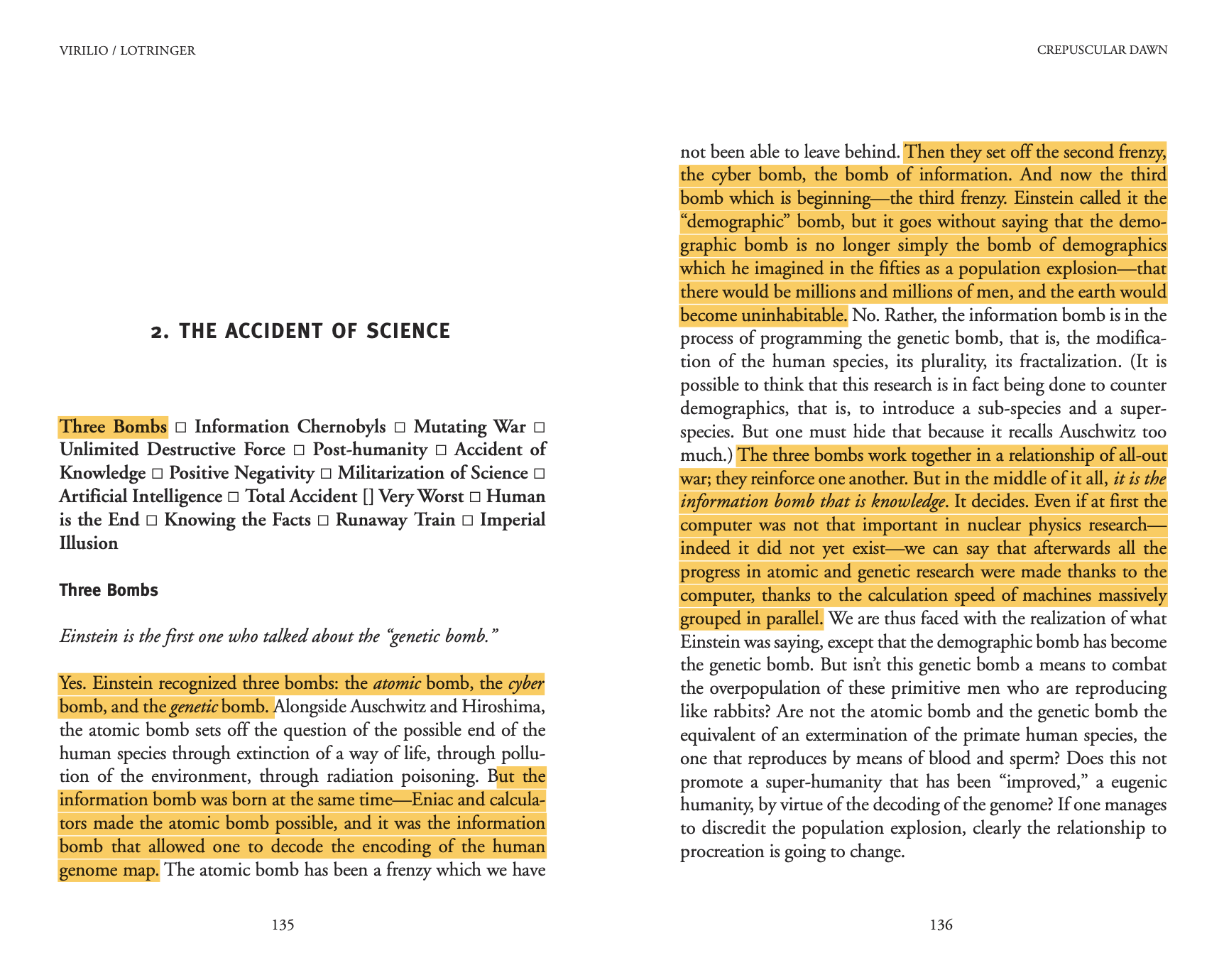
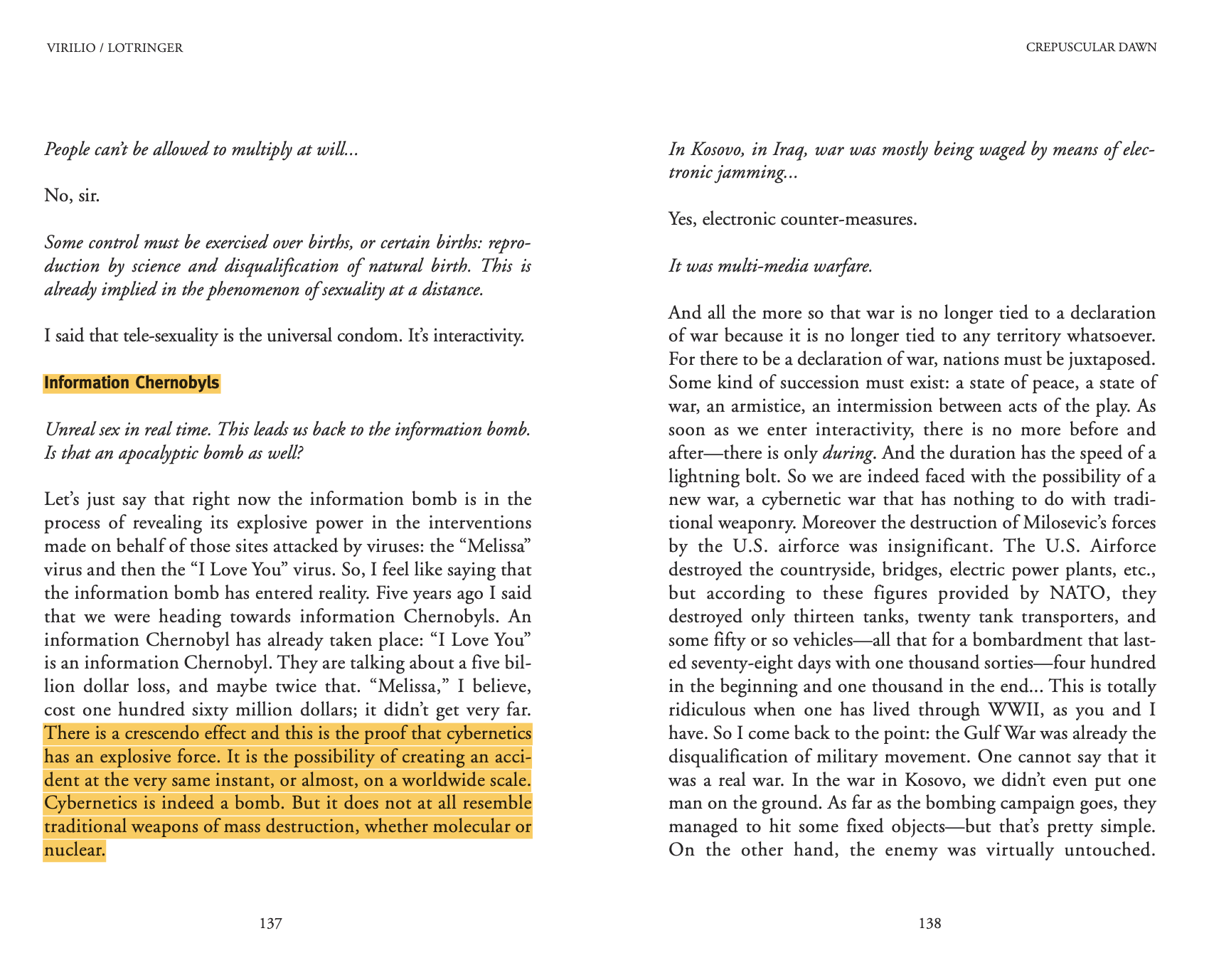

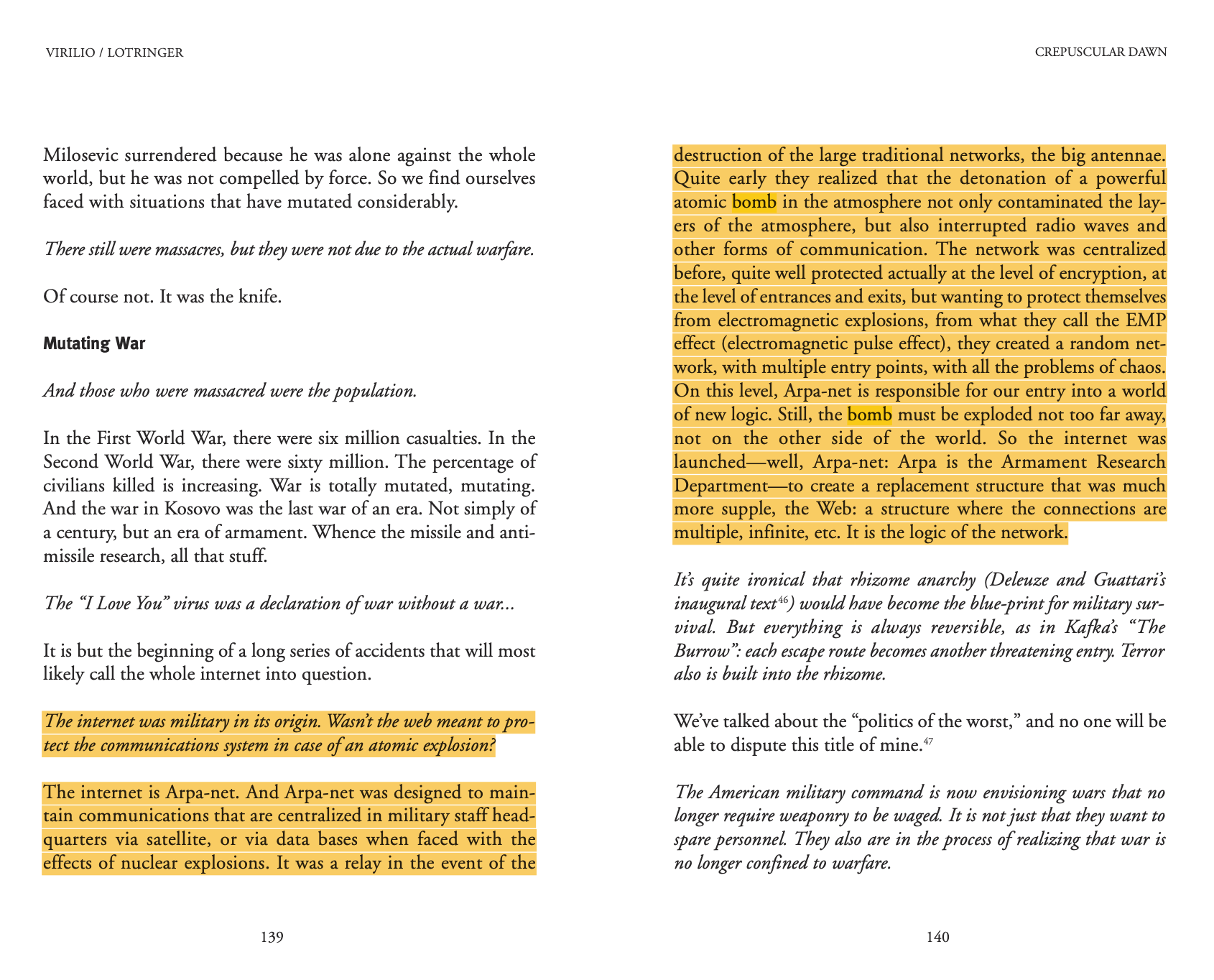
Transmission-6b. The Kalevalan Arc (Kulusuk, Novaya Zemlya, Marshall Islands)

The Protagonist moves through a solarine arc, chasing the cartridge, and the secret of the New Silk Soul
The Blue of Time (Kulusuk, Greenland) | Late summer off the coast of Kulusuk Island, south-east Greenland, and a single iceberg sweats in the channel. The berg is vast, perhaps 100 feet from sea to summit, shaped like a mainsail with a rounded tip. It glistens white as wet wax. Its submerged bulk shows as a bottle-green aura. Dark blue of the channel, sharp blue of the cloudless sky. Daytime moon above a shield-shaped mountain. On the far side of the channel, a glacier runs down to the water, six miles or so distant, the cliff of the calving face faintly visible. All through that hot summer of 2016, before I went to Greenland, ice around the world was yielding up long-held secrets. The cryosphere was melting, and as it melted things that would have better stayed buried were coming to the surface. On the Yamal peninsula, between the Kara Sea and the Gulf of Ob, 4,500 square miles of permafrost thawed. Cemeteries and animal burial grounds turned to slush. Reindeer corpses that had died of anthrax seventy years earlier were exposed to the air. Twenty-three people were infected, their skin blackened with lesions. One, a child, died. Russian veterinarians travelled the region dressed in white anti-contamination suits, vaccinating reindeer and their herders. Russian troops burned infected corpses in high-temperature pyres. Russian agriculturalists said that nothing would ever grow in the region again. Russian epidemiologists predicted other releases from Arctic burial sites and shallow graves: smallpox from victims who had perished in the late 1800s, giant viruses that had been long-dormant in the frozen bodies of mammoths. On the Siachen glacier in the Karakoram, where Indian and Pakistani troops have been fighting a forgotten war since 1984, the retreating ice was revealing spent shells, ice axes, bullets, abandoned uniforms, vehicle tyres, radio sets – and slaughtered human bodies.
In north-west Greenland, a buried Cold War US military base and the toxic waste it contained began to rise. Camp Century was excavated by the US army engineering corps in 1959. They tunnelled into the ice cap and created a hidden town: a two-mile network of passageways housing laboratories, a shop, a hospital, a cinema, a chapel, and accommodation for 200 soldiers, all powered by the world’s first mobile nuclear generator. The base was abandoned in 1967. The departing soldiers took the reaction chamber of the nuclear generator with them. But they left the rest of the base’s infrastructure intact under the ice, including the biological, chemical and radioactive waste it contained, assuming – as the Pentagon closure reports declared – that it would be ‘preserved for eternity’ by the perpetual snowfalls of northern Greenland. It is all interred there still: some 200,000 litres of diesel fuel and unknown amounts of radioactive coolant and other pollutants, including PCBs. But as global temperatures have risen, so snowmelt is forecast to exceed snow accumulation in the region of Camp Century. In a dynamic I have seen so often in the underland that it has become a master trope, troublesome history thought long since entombed is emerging again. Uneasy stories circulated about disappearances in the ice. A Russian businessman had flown in on the east coast, wearing a camel-skin coat and carrying a briefcase, and never flown out again. A Japanese hiker had vanished in the west of the country, been missing for weeks. Local people spoke half-jokingly of the kisuwak, the wild creature that roamed the ice and snatched unwary travellers – an animate version of the glacial crevasse or the silky-thin sea ice. In that region, at this time of history, it felt as if there were many places where one might fall right through the world’s surface.“Kulusuk is one of a handful of small settlements on the east coast of Greenland – fingernail-holds on the edges of this great island. Fewer than 3,000 people live on around 1,600 miles of coastline. Like many of the smaller Greenlandic settlements, Kulusuk is a society ruptured by transition – a previously part-nomadic subsistence-hunting culture, into which modernity has intruded in the forms of stasis and alcohol. Ice has a social life. Its changeability shapes the culture, language and stories of those who live near it. In Kulusuk, the consequences of recent changes are widely apparent. The inhabitants of this village are part of the precariat of a volatile, fast-warping planet. The melting of the ice, together with forced settlement and other factors, has had severe effects upon the mental and physical health of native Greenlanders, causing rates of depression, alcoholism, obesity and suicide to rise, especially in small communities. ‘The loss of that landscape of ice,’ writes Andrew Solomon, studying depression rates in Greenland, ‘is not merely an environmental catastrophe, but also a cultural one.’ The Inuktitut of Baffin Island in the Canadian Arctic have begun to use a word that refers at once to the changes in the weather, the changes in the ice, and the consequent changes in the people themselves. The word is uggianaqtuq – meaning ‘to behave strangely, unpredictably’. The last few years have seen the granting of more than fifty mining licences in Greenland, allowing exploratory mining for gold, rubies, diamonds, nickel and copper, among other minerals. And on the southern tip of Greenland, close to a small town with high unemployment called Narsaq, lies one of the world’s largest uranium deposits. Niels Bohr, the Nobel Prize-winning atomic physicist who worked on the Manhattan Project, visited Narsaq in 1957, shortly after the discovery of the deposit. A joint Chinese-Australian mining project now proposes to establish an open-pit mine behind Narsaq, in order to acquire not only uranium but also the rare earth minerals used in wind turbines, mobile phones, hybrid cars and lasers. That evening in Kulusuk a lurid sunset brews above the village, lilac and orange backlighting a sawtooth ridge of peaks, with incandescent reefs of ribbed clouds. It is alpenglow of a kind – but of an incredible wattage. ‘It’s the ice cap that makes sunsets like this,’ Matt explains. ‘It’s probably the biggest mirror in the world: hundreds of thousands of square miles of ice reflecting up the sun as it dips towards the horizon.” The day before I go to Olkiluoto Island and down to the hiding place, I wait in the little nearby town of Rauma, reading the great folk epic of Finland, the Kalevala.
The Kalevala is a long poem of many voices and many stories which – like the Iliad and the Odyssey – grows out of diverse and deep-rooted traditions, from Baltic song to Russian storytelling. It existed chiefly as a mutable oral text for more than a thousand years, until in the nineteenth century the Kalevala was collected, edited and published by the Finnish scholar Elias Lönnrot, giving us the mostly fixed version we now have. Lönnrot’s Kalevala is made up of many intertwining narratives that combine the mythical and the lyrical with the mundane and the logistical, and that together dramatize a northern people’s engagement with a hard, beautiful landscape of forests, islands and lakes. In its layering of different ages of origin, the Finnish scholar Matti Kuusi compares the poem’s own history of making with ‘the numerous strata of a burial mound in which many generations . . . and their artefacts have been buried’. The Kalevala is a haunting epic that has preoccupied me for some years, obsessed as it is with the power of word, incantation and story to change the world into which they are uttered. Its heroes are language masters and wonder-workers – and the greatest of them is called Väinämöinen, whose name translates memorably as ‘Hero of the Slow-Moving River’. Partway through the poem, Väinämöinen is given the task of descending to the underland. Hidden in the Finnish forests, he is told, is the entrance to a tunnel that leads to a cavern far underground. In that cavern are stored materials of huge energy: spells and enchantments which, when spoken, will release great power. To approach this subterranean space safely Väinämöinen must protect himself with shoes of copper and a shirt of iron, lest he be damaged by what it contains. The Kalevala is fascinated by the underland; by the safe storage of dangerous materials and the safe retrieval of precious materials. At the poem’s heart is a magical object or substance known as ‘Sampo’ or the ‘Sammas’; constructed by the blacksmith Ilmarinen, another of the Kalevala’s supernatural heroes, and stored inside the ‘copper slope’ of a ‘rocky hill’, protected by a gate with ten locks. This enchanted artefact, most often figured as a mill or quern, brings power, wealth and fortune to whoever controls it. It is – in modern terms – a weapons system, a rich raw resource, a nation’s organized industry, or a nuclear power station. The Sampo grinds out flour, it grinds out money – and it grinds out time. One of its given tasks is to grind out the age of the world, causing epochs to yield to one another in an immense cycle of precessions. The world has changed too much . . . we are in the Anthropocene. (Underland, Robert Macfarlane, 2019)
Project 4.1 The Secrets of the Marshall Islands 马绍尔群岛的秘密 description: Human rights the American Way 美国式的人权 (https://www.youtube.com/watch?v=LXvoRv-v9fg) as fore of nuclear legacies in Radical Decoupling (https://www.youtube.com/watch?v=r3mk0gpyRIQ)
The Hiding Place (https://www.youtube.com/watch?v=o4JURzI5dTU) | The Seed Vault (https://www.youtube.com/watch?v=qXBnkRE9gM4)
Transmission 6c. Retinal Lake 视网膜 湖 Rainlight Northsea Ekofisk
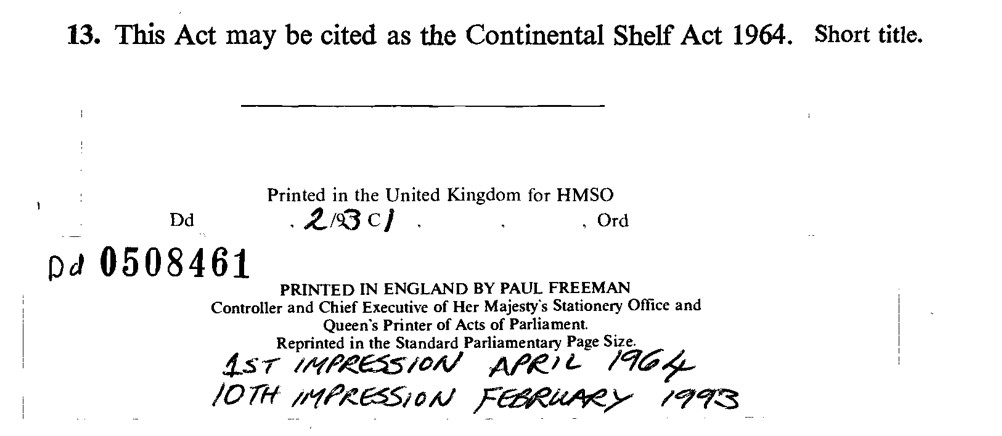
Rainlight northsea, dad was born in Bristol, Dziadek left the northsea, norway operations behind, in shifting red light, when came its oil boom. Awhile, gulfstreamed in rebel county, Bantry Bay, the Suez closure boomed the Whiddy Depot, then came the explosion, the Betelgeuse that blew the windows out in town the oil rig, 01:00am Monday 8 January 1979, a rumbling or cracking noise followed by a huge explosion within the hull – siniys and goluboys – radiating outward, heat and light and dissipation-gauze, then came Last Breath, 2012, the man lost beneath the North Sea in fading light, severed from the umbilical in rough drift, and history all came bound up in the rainlight shearing off the North Sea, vapours fractionating into distant singular paths and homes and heats, marriages, divorces, deaths, births – then the two Delillo quotes I read last night came flooding back (01.05.20):
He remained at the sink. He ran the water over the skillet, then scoured some more, then ran the water, then scoured, then ran the water. He heard her come up the steps and open the door. She walked into the hallway and ran he ran the water, keeping his back to the room. She said, “I took the taxi from the bus station instead of calling. I had just enough money left for the taxi and the tip and I wanted to arrive totally broke.” The wind blows the door and look what walks in.” “Actually I have two dollars”. He didn’t turn around. He would have to adjust to this. He’d naturally fitted himself to the role, for some years now, of friend abandoned or lover discarded. We all know how the thing we secretly fear is not a secret at all but the open and eternal thing that predicts its own recurrence. He turned off the water and put the skillet in the drain basket and waited. (Don Delillo, Mao II, page 219) A silver flare sails briefly over the streets, bits of incandescence trailing away. Radio voices calling all around her. Beirut, Beirut. They crowd in toward her, pressing with a mournful force. People calling from basement shelters, faces in shadow, clothing going dark with heavy sweat, sleeping children curled around their war toys. […] all the refugees, pray for their dead and wait for the shelling to subside. The war is so fucking simple. It is the lunar part of us that dreams of wasted terrain. She hears their voices calling across the levelled city. (Don Delillo, Mao II, page 239)
The unconscious stream of history – solar winds, telluric depth, and chance – quantum in a way that all possible states are carried on the wind, as long as no one is watching anything goes – Delillo said Libra, on Oswald, was a sense-making of history centred on the role of the irrational and its instrument, the man who, as Delillo told Ann Arensberg, ‘stepped outside history and let the forces of destiny move him where they would – non-historical forces like dreams, coincidences, intuitions, the alignment of the heavenly bodies, all these things. the workings of dreams, coincidence, astrology – all that lies outside systems of historical logic. Only the ‘language of the night sky’ can express the truth behind Oswald’s act, but it is an astrological ‘truth at the edge of human affairs’.
The thin porous material was used to construct real fields on a soap bubble world, they called it the Von Uexkull System, installed by the UN-SCO dyad across the Sinoparallel and Atlantic States, the World-Island was a densely populated soap universe, it was all part of the great reversion from the Non-Geometrists of the late 20th and Early 21st Century and the great wave of Immunology Sciences that emerged in the schism of COVID-19…. blowing the straw from both ends, the great power popping and expanding worlds…
UNDERLAND, racing under the North Sea for dark matter
Transmission 7. Gasbuggy, New Mexico | Operation Plowshare | Dec 10 1967
THE ATOM UNDERGROUND profiles Project Gasbuggy and Project Plowshare, which were ill-fated attempts to demonstrate the use of nuclear detonations for peaceful purposes, in this case extracting more oil and natural gas from underground through nuclear fracking. Plowshare was the overall United States term for the development of techniques to use nuclear explosives for peaceful construction purposes. It was the US portion of what are called Peaceful Nuclear Explosions (PNE). Successful demonstrations of non-combat uses for nuclear explosives include rock blasting, stimulation of tight gas, chemical element manufacture (test shot Anacostia resulted in Curium-250m being discovered), unlocking some of the mysteries of the so-called “r-Process” of stellar nucleosynthesis and probing the composition of the Earth’s deep crust, creating reflection seismology Vibroseis data which has helped geologists and follow on mining company prospecting. Negative impacts from Project Plowshare’s 27 nuclear projects generated significant public opposition, which eventually led to the program’s termination in 1977. These consequences included Tritiated water (projected to increase by CER Geonuclear Corporation to a level of 2% of the then-maximum level for drinking water) and the deposition of fallout from radioactive material being injected into the atmosphere before underground testing was mandated by treaty. Project Gasbuggy was an underground nuclear detonation carried out by the United States Atomic Energy Commission on December 10, 1967 in rural northern New Mexico. It was part of Operation Plowshare, a program designed to find peaceful uses for nuclear explosions. Gasbuggy was carried out by the Lawrence Radiation Laboratory and the El Paso Natural Gas Company, with funding from the Atomic Energy Commission. Its purpose was to determine if nuclear explosions could be useful in fracturing rock formations for natural gas extraction. The site, lying in the Carson National Forest, is approximately 34 km (21 mi) southwest of Dulce, New Mexico and 87 km (54 mi) east of Farmington, and was chosen because natural gas deposits were known to be held in sandstone beneath Leandro Canyon.[3] A 29 kt (120 TJ) device was placed at a depth of 1,288 m (4,227 ft) underground, then the well was backfilled before the device was detonated; a crowd had gathered to watch the detonation from atop a nearby butte. The detonation took place after a couple of delays, the last one caused by a breakdown of the explosive refrigeration system. The detonation produced a rubble chimney that was 24 m (80 ft) wide and 102 m (335 ft) high above the blast center. After an initial surface cleanup effort the site sat idle for over a decade. A later surface cleanup effort primarily tackled leftover toxic materials. In 1978, a marker monument was installed at the Surface Ground Zero (SGZ) point that provided basic explanation of the historic test. Below the main plaque lies another which indicates that no drilling or digging is allowed without government permission. The site is publicly accessible via the Carson National Forest, F.S. 357 dirt road/Indian J10 that leads into the Carson National Forest. Following the Project Gasbuggy test, two subsequent nuclear explosion fracturing experiments were conducted in western Colorado in an effort to refine the technique. They were Project Rulison in 1969 and Project Rio Blanco in 1973. In both cases the gas radioactivity was still seen as too high and in the last case the triple-blast rubble chimney structures disappointed the design engineers. Soon after that test the ~ 15-year Project Plowshare program funding dried up. These early fracturing tests were later superseded by hydraulic fracturing (fracking) technologies.
Transmission 8. 1969 Department of Defense Pacific Command Vietnam War 25004
Beyond the West Coast of the United States are 85 million square miles of ocean, stretching from the Aleutian Islands in the north to the South Pole; past the Hawaiian Islands and onto Guam and the Philippines and continuing to Southeast Asia and the Indian Ocean and beyond. In total, about 40 percent of the globe are covered by those waters — and are the responsibility of the United States Pacific Command. That dramatic narrative introduces the viewer to this color film and the unified combatant command of the US armed forces responsible for the Indo-Asia-Pacific region. (It is also the oldest and largest of the unified combatant commands.) Produced by the Department of Defense circa 1969, the film shows a montage of aircraft, soldiers, and sailors, as the narrator quotes President Dwight D. Eisenhower as saying that separate air, land, and sea warfare are no longer viable, and that all services must operate as a single unit under the command of the Commander in Chief, Pacific Fleet (CINCPAC). At mark 03:08, an officer (played by veteran actor William Boyett) explains the purpose and mission of Pacific Command, as well as its chain of command. Following a reminder of the lives lost in World War II’s Pacific Theater at mark 05:10, the narrator explains that areas in the Pacific continue to be at risk, as a map of Southeast Asia is shown on the screen. Following a review of military commands in the Pacific, the film continues to explore the importance of Pacific Command, from the strategic position of B-52 bombers on Guam to the deployment of nuclear submarines beneath the water. Although the sea has been kept free, the narrator continues at mark 08:38, that is not the case for all lands, as the film shows scenes of US military personnel — “welcome guests” — mingling with residents, teaching them skills, or providing medical services. The viewer is also taken to various bases, including Clark Air Force Base and the US Naval Base at Subic Bay in the Philippines, with those stationed there poised to act if and when needed. At mark 10:50, the film takes its viewers to the Demilitarized Zone (DMZ) between North Korea and South Korea, as we learn how the armistice line is permanently lined by troops from the US 8th Army and the Republic of Korea — “a capable deterrent against overt Communist aggression.” Troops stationed in Korea are also shown socializing with residents and teaching boys and girls volleyball, as well as assisting with farming and creating roads and bridges. As the film takes us to the coast of Japan at mark 14:39, we see scenes at Tachikawa Airfield in Tokyo and army depots tasked with providing supplies to Pacific commands. At times, troops are also forced into combat, as the film shows several minutes of footage from the jungles of Vietnam beginning at mark 17:17, and an explanation that the US Army and Marine Corps are trying to “persuade” North Vietnamese forces to withdraw from the south, with assistance from the Air Force and Navy. The Navy and Coast Guard also aid South Vietnamese forces with stopping the re-supply of North Vietnamese forces, we learn starting at mark 20:35. With continued assistance from South Vietnamese forces, the Pacific Command will continue its efforts in Southeast Asia and across all 85 million square miles it is charged to protect, the narrator reminds the viewer, as the film comes to an end.
Transmission 9. The Vela Incident 22091971 00:53 UTC | Prince Edwards Island Indian Ocean
Made by the U.S. Air Force’s Eastern Test Range, this rarely seen film shows the launch of the special Vela satellite designed to detect radiation from nuclear tests. The film shows the Titan IIIC launch vehicle used in the program with a specific focus on the C-18 / Vela – VB mission. This was the last of the Vela satellites, launched on April 8, 1970. The Titan IIIC shown was the 100th launched at the Eastern Test Range. The Titan IIIC consisted of a two-stage Titan core and upper stage called the Titan Transtage, both burning hypergolic liquid fuel, and two large UA1205 solid rocket boosters. Vela was the name of a group of satellites developed as the Vela Hotel element of Project Vela by the United States to monitor compliance with the 1963 Partial Test Ban Treaty by the Soviet Union. Vela started out as a small budget research program in 1959. It ended 26 years later as a successful, cost-effective military space system, which also provided scientific data on natural sources of space radiation. In the 1970s, the nuclear detection mission was taken over by the Defense Support Program (DSP) satellites. In the late 1980s, it was augmented by the Navstar Global Positioning System (GPS) satellites. The program is now called the Integrated Operational Nuclear Detection System (IONDS). The total number of satellites built was 12, six of the Vela Hotel design and six of the Advanced Vela design. The Vela Hotel series was to detect nuclear initiations in space, while the Advanced Vela series was to detect not only nuclear explosions in space but also in the atmosphere. All spacecraft were manufactured by TRW and launched in pairs, either on an Atlas-Agena or Titan III-C boosters. They were placed in orbits of 118,000 km (73,000 miles),[1] well above the Van Allen radiation belts. Their apogee was about one-third of the distance to the Moon. The first Vela Hotel pair was launched on October 17, 1963,[2] one week after the Partial Test Ban Treaty went into effect, and the last in 1965. They had a design life of six months, but were actually shut down after five years. Advanced Vela pairs were launched in 1967, 1969 and 1970. They had a nominal design life of 18 months, later changed to 7 years. However, the last satellite to be shut down was Vehicle 9 in 1984, which had been launched in 1969 and had lasted nearly 15 years. The Titan IIIC was an expendable launch system used by the United States Air Force from 1965 until 1982. It was the first Titan booster to feature large solid rocket motors and was planned to be used as a launcher for the Dyna-Soar and Manned Orbiting Laboratory, though both programs were cancelled before any astronauts flew. The majority of the launcher’s payloads were DoD satellites, namely for military communications and early warning, though one flight (ATS-6) was performed by NASA. The Titan IIIC was launched exclusively from Cape Canaveral while its sibling, the Titan IIID, was launched only from Vandenberg AFB.
The Vela incident, also known as the South Atlantic Flash, was an unidentified double flash of light detected by an American Vela Hotel satellite on 22 September 1979 near the Prince Edward Islands in the Indian Ocean. The cause of the flash remains officially unknown, and some information about the event remains classified.[1] While it has been suggested that the signal could have been caused by a meteoroid hitting the satellite, the previous 41 double flashes detected by the Vela satellites were caused by nuclear weapons tests.[2][3][4] Today, most independent researchers believe that the 1979 flash was caused by a nuclear explosion[1][5][6][7] — perhaps an undeclared nuclear test carried out by South Africa and Israel.[8]The “double flash” was detected on 22 September 1979, at 00:53 UTC, by the American Vela satellite OPS 6911 (also known as Vela 10 and Vela 5B[9]), which carried various sensors designed to detect nuclear explosions that contravened the Partial Nuclear Test Ban Treaty. In addition to being able to detect gamma rays, X-rays, and neutrons, the satellite also contained two silicon solid-state bhangmeter sensors that could detect the dual light flashes associated with an atmospheric nuclear explosion: the initial brief, intense flash, followed by a second, longer flash.[4 The satellite reported a double flash, which could be characteristic of an atmospheric nuclear explosion of two to three kilotons, in the Indian Ocean between the Crozet Islands (a sparsely inhabited French possession) and the Prince Edward Islands (which belong to South Africa) at 47°S 40°E. Other systems data, such as Sound Surveillance System (SOSUS) and Missile Impact Location System (MILS) that were established by the United States and NATO to detect Soviet submarines and the locations where used missile test warheads splashed down, respectively, were searched in an effort to gain more knowledge on the possibility of a nuclear detonation in the region. These data were found not to have enough substantial evidence of a detonation of a nuclear weapon.[11] United States Air Force surveillance aircraft flew 25 sorties over that area of the Indian Ocean from 22 September to 29 October 1979 to carry out atmospheric sampling.[12] Studies of wind patterns confirmed that fall-out from an explosion in the southern Indian Ocean could have been carried from there to southwestern Australia.[13] It was reported that low levels of iodine-131 (a short-half-life product of nuclear fission) were detected in sheep in the southeastern Australian States of Victoria and Tasmania soon after the event. Sheep in New Zealand showed no such trace.[13][14] The Arecibo ionospheric observatory and radio telescope in Puerto Rico detected an anomalous ionospheric wave during the morning of 22 September 1979, which moved from the southeast to the northwest, an event that had not been observed previously.[15]
The explosion was picked up by a pair of sensors on only one of the several Vela satellites; other similar satellites were looking at different parts of the Earth, or weather conditions precluded them seeing the same event.[22] The Vela satellites had previously detected 41 atmospheric tests—by countries such as France and the People’s Republic of China—each of which was subsequently confirmed by other means, including testing for radioactive fallout. The absence of any such corroboration of a nuclear origin for the Vela incident also suggested that the “double flash” signal was a spurious “zoo” signal of unknown origin, possibly caused by the impact of a micrometeoroid. Such “zoo” signals which mimicked nuclear explosions had been received several times earlier.[23] Their report noted that the flash data contained “many of the features of signals from previously observed nuclear explosions”,[24] but that “careful examination reveals a significant deviation in the light signature of the 22 September event that throws doubt on the interpretation as a nuclear event”. The best analysis that they could offer of the data suggested that, if the sensors were properly calibrated, any source of the “light flashes” were spurious “zoo events”. Thus their final determination was that while they could not rule out that this signal was of nuclear origin, “based on our experience in related scientific assessments, it is our collective judgment that the September 22 signal was probably not from a nuclear explosion”.[25] Victor Gilinsky (former member of the Nuclear Regulatory Commission) argued that the science panel’s findings were politically motivated.[15] Some data seemed to confirm that a nuclear explosion was the source for the “double flash” signal. An “anomalous” traveling ionospheric disturbance was measured at the Arecibo Observatory in Puerto Rico at the same time,[15] but many thousands of miles away in a different hemisphere of the Earth. A test in Western Australia conducted a few months later found some increased nuclear radiation levels.[26][page needed] A detailed study done by New Zealand’s National Radiation Laboratory found no evidence of excess radioactivity, and neither did a U.S. Government-funded nuclear laboratory.[27] Los Alamos National Laboratory scientists who worked on the Vela Hotel program have professed their conviction that the Vela Hotel satellite’s detectors worked properly.[15][28] Leonard Weiss, at the time Staff Director of the Senate Subcommittee on Energy and Nuclear Proliferation, has also raised concerns about the findings of the Ad-Hoc Panel, arguing that it was set up by the Carter administration to counter embarrassing and growing opinion that it was an Israeli nuclear test.[29] Specific intelligence about the Israeli nuclear program was not shared with the panel whose report therefore produced the plausible deniability that the administration sought.[29]
In 2003, Stansfield Turner, the Director of the CIA during the Carter administration, stated that the Vela detection was of a “man-made phenomenon”.[60] In his 2006 book On the Brink, the retired CIA clandestine service officer Tyler Drumheller wrote of his 1983–1988 tour-of-duty in South Africa: “We had operational successes, most importantly regarding Pretoria’s nuclear capability. My sources collectively provided incontrovertible evidence that the apartheid government had in fact tested a nuclear bomb in the South Atlantic in 1979, and that they had developed a delivery system with assistance from the Israelis.” In 2010, Jimmy Carter published his White House Diaries. In the entry for 22 September 1979, he wrote “There was indication of a nuclear explosion in the region of South Africa—either South Africa, Israel using a ship at sea, or nothing.”[21] For 27 February 1980, he wrote “We have a growing belief among our scientists that the Israelis did indeed conduct a nuclear test explosion in the ocean near the southern end of Africa.”[38] Several diplomatic cables released as part of the 2010 WikiLeaks cable leaks revealed some of the US state department’s initial assessment of the data obtained from the Vela satellite; a cable dated 26 October 1979 states: We have subjected this data to an intensive technical review and this review supports the conclusion that a nuclear explosion probably did occur. — [61] Some American information related to this incident has been declassified in the form of heavily redacted reports and memoranda following requests for records made under the US Freedom of Information Act; on 5 May 2006, many of these declassified documents were made available through the National Security Archive.[4] A December 2016 report by William Burr and Avner Cohen of George Washington University‘s National Security Archive and Nuclear Proliferation International History Project noted that the debate over the South Atlantic flash has shifted over the last few years, on the side of a man-made weapon test.[1] The National Security Archive briefing concluded: A Central Intelligence Agency-sponsored panel of well-respected scientists concluded that a mysterious flash detected by a U.S. Vela satellite over the South Atlantic on the night of 22 September 1979 was likely a nuclear test. The newly released research and subsequent report was largely based upon recently declassified documents in files at the National Archives of Gerard C. Smith, a former Ambassador and special envoy on nuclear nonproliferation during Jimmy Carter’s presidency.[1][62][5] Smith had once said: “I was never able to break free from the thought that the event was a joint operation between Israel and South Africa.” The documents cited a June 1980 U.S. State Department report where Defense Intelligence Agency Vice Director Jack Varona had said the ensuing U.S. investigation was a “white wash, due to political considerations” based on “flimsy evidence”. He added that the “weight of the evidence pointed towards a nuclear event” and cited hydroacoustic data analyzed by the Naval Research Laboratory. The data, he suggested, involved “signals … unique to nuclear shots in a maritime environment” and emanating from the area of “shallow waters between Prince Edward and Marion Islands, south-east of South Africa”.[1][5][62] Avner Cohen stated that “Now, 40 years later, there is a scientific and historical consensus that it was a nuclear test and that it had to be Israeli.”[63] In 2018, a new study made the case for the double flash being a nuclear test.[6][7][64][65]
Evaluation of Some Geophysical Events on 22 September 1979 – https://www.osti.gov/servlets/purl/6419744; The Last War by Abe Ariel – https://biblio.co.uk/book/last-war-ariel-abe/d/688894313; The 22 September 1979 Vela Incident: The Detected Double Flash (Christopher M. Wright and Lars-Erik De Geer, 2017) – http://scienceandglobalsecurity.org/archive/sgs25wright.pdf; https://www.universetoday.com/122379/remembering-the-vela-incident/; Flash From the Past: Why an apparent Israeli nuclear test in 1979 matters today (Leonard Weiss, The Atomic Bulletin, September 8 2015) – https://thebulletin.org/2015/09/flash-from-the-past-why-an-apparent-israeli-nuclear-test-in-1979-matters-today/
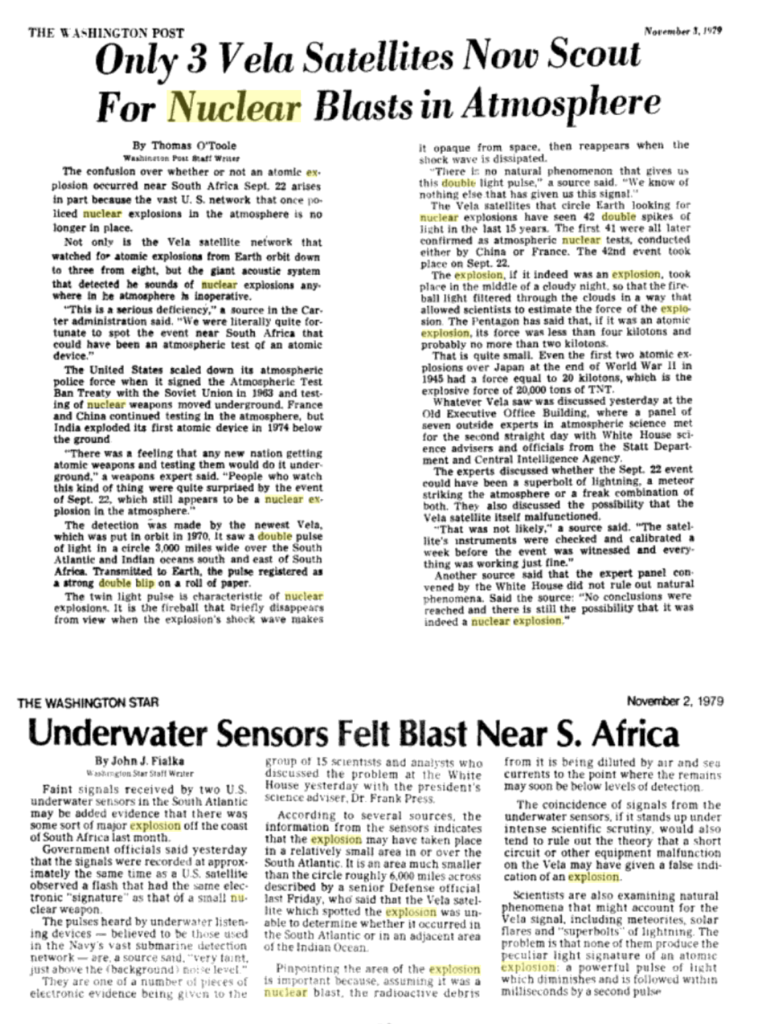
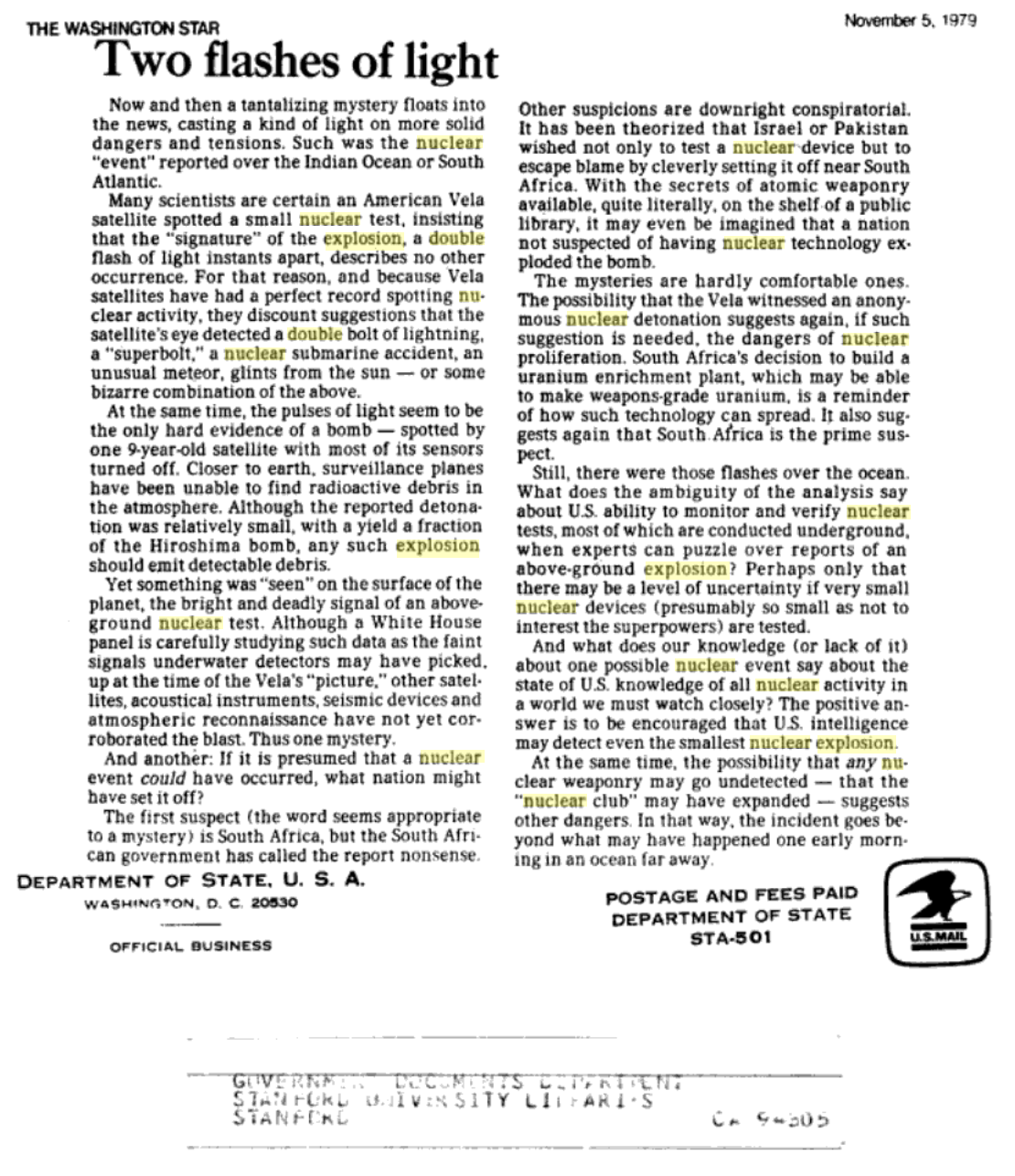
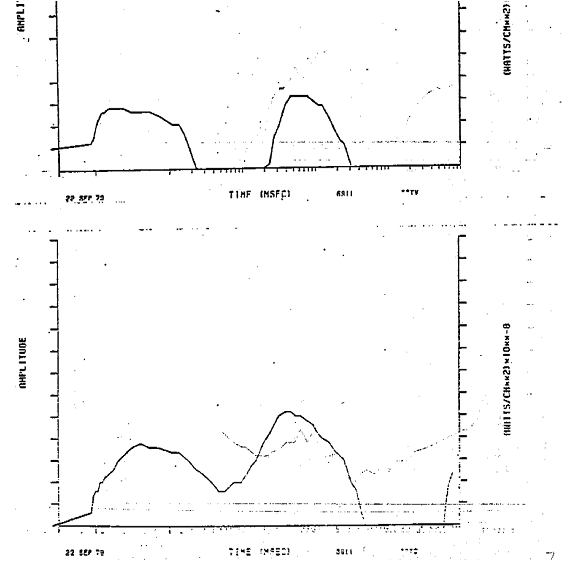
Transmission 10. Vemork Hydroelectric Power Plant, Norway 27 February 1942
THE TUBE ALLOYS COMMITTEE met on April 23, 1942, at Old Queen Street in London, gathering in a seventeenth-century townhouse with tall windows and a fine view of the early spring in St. James’s Park below. As usual, the scientists, led by Wallace Akers, former research director at Norsk Hydro’s rival Imperial Chemical Industries (ICI), had a lot to talk about: experimental work on fusing a bomb, cooperation with the Americans, the expansion of a model isotope-separation plant, and further orders of uranium oxide. As at every meeting, they discussed the Germans, but this time with heightened urgency. Since 1939 the British scientific establishment had feared the Nazis would obtain an atomic bomb. Hitler’s invasion of Poland, then his boast that he would soon “employ a weapon” for which there was no answer, made the danger that much more imminent, prompting Sir Henry Tizard, head of the Air Ministry’s research department, to investigate the production of a British bomb. As the government’s chief scientific adviser, charged with developing new technologies like radar, Tizard’s word carried a lot of weight. And so the inquiry began. Two young physicists, Otto Frisch and Rudolf Peierls, both Jewish refugees from Germany, put the British firmly on their path. On March 19, 1940, their report, “On the Construction of a Super Bomb,” landed on Tizard’s desk like a thunderclap. Frisch and Peierls detailed how little more than one pound of pure U-235—divided into two (or more) parts that were then smashed together at a high velocity—would initiate an explosion that would “destroy life in a wide area . . . probably the centre of a big city . . . at a temperature comparable to the interior of the sun.” Then they raised the specter that German scientists might soon “be in possession of this weapon.” The only way to counter this threat, they concluded, was for Britain to have the technology as well.
The following month, the British government launched the MAUD Committee. Exploratory research began with some of its preeminent scientists, as well as Peierls and Frisch. Foremost, they proposed building a plant to separate rare U-235 from its cousin U-238. This plant would cost as much as a battleship. In July 1941 the group delivered a road map for an atomic bomb program. Tizard remained skeptical, particularly as to its cost. He thought it best the Americans handle everything. But the project now had a champion in Lord Cherwell, the Oxford physicist who Churchill said could “decipher the signals from the experts on the far horizons and explain to me in lucid homely terms what the issues were.” On August 27, 1941, Cherwell recommended moving forward with producing the first bomb within two years. Throughout this period, fears over the German bomb persisted. From far and wide came whispers, rumors, threats, and fact—which, mixed together, made for the typically confusing brew that governments called “intelligence.” Two German pilots were overheard on a tram speaking about “new bombs” that were “very dangerous” and had the power of an earthquake. One German émigré physicist warned that there was pressure from high within the Nazi government to build a bomb and that the Allies “must hurry.” Another warned that the Wehrmacht had taken over the Kaiser Wilhelm Institute of Physics. A military attaché in Stockholm reported, “A tale has again reached me that the Germans are well under way with the manufacture of an uranium bomb of enormous power, which will blast everything, and through the power of one bomb a whole town can be leveled.” Other reports chronicled a mysterious September 1941 meeting where Werner Heisenberg admitted to Niels Bohr, who was living in Nazi-occupied Denmark, that a bomb could be made, “and we’re working on it.” The best intelligence the British received came through German activity at Vemork. As early as April 1940 Jacques Allier had alerted his British allies to Nazi efforts in uranium research using heavy water from the plant. After the occupation of Paris two months later, the Norwegian supply of 185 kilograms under Joliot-Curie’s care was secreted out of the country aboard a British ship before the Germans could seize it. The twenty-six flasks were hidden in Windsor Castle until the Tube Alloys scientists began their own experiments with the material. The continued German focus on heavy water into 1942 was of even greater importance because of a newly discovered element called plutonium. The British were centering their efforts on isotope separation to produce enough pure U-235 for their bomb. But British and American scientists knew this was not the only path toward an explosive. In mid-1940, before the curtain of censorship fell completely, a widely published paper in the Physical Review revealed that when uranium (atomic number 92) is bombarded by neutrons, some split the rare isotope U-235 nuclei but others are absorbed by the much more prevalent U-238 nuclei, transmuting it into the isotope U-239. This unstable isotope decayed by what was called beta emission, which had the effect of increasing the number of protons in the nucleus by one while reducing the number of neutrons by the same amount. This new element, neptunium (atomic number 93), readily decayed once again, creating yet another element, but a stable one: plutonium (atomic number 94).
As further Allied experiments showed, but now in classified reports, plutonium was fissile, similar to U-235, and could be used as explosive material. However, unlike U-235, plutonium was chemically different from uranium, and thus the two were more easily—and much more cost-effectively—separated. If one managed to engineer a self-sustaining reactor with uranium and a moderator, it would breed enough plutonium that could then be extracted to help build a bomb. This kind of reactor, Allied physicists theorized, required between three and six tons of heavy water. Through Leif Tronstad, the British knew the Germans were attempting to produce similarly large quantities of heavy water at Vemork. At the April 23 Tube Alloys meeting, Akers and his group of scientists discussed the findings of a new SOE source in Norway (a quick-working Skinnarland). According to his coded messages, heavy water production was up to 120 kilograms a month—and increasing. Something, the men at Old Queen Street decided, must be done, and soon. In the minutes of their meeting sent to Churchill’s War Cabinet, they stated, “Since recent experiments have confirmed that element 94 would be as good as U-235 for military purposes, and since this element is best prepared in systems involving the use of heavy water, the Committee recommends that an attempt should, if possible, be made to stop the Norsk Hydro production.” If Vemork had not been a significant target before, it was definitely one now.” “In the weeks that followed, Tronstad suddenly found himself preoccupied with heavy water. On May 1 Wilson sent him a note, asking him to determine where and to whom in Germany Norsk Hydro delivered its supply from Vemork. The same day, he consulted with Akers on the construction of a British heavy water plant. Soon after, he sat down again with Eric Welsh, who wanted him to set up a spy network, both inside and outside Vemork. Skinnarland was already providing good intelligence, but it simply wasn’t enough. The Tube Alloys Committee speculated that the Nazis were pursuing a reactor to produce plutonium, a sure road to a weapon, and everything must be known about their activities. Germany was largely closed to intelligence work, but Nazi scientists traveled to Vemork, Oslo, and Stockholm—places where Tronstad had close contacts. On May 11 Tronstad wrote two letters, the urgency in his tone clear. The first was to “the Master”: Jomar Brun. Tronstad requested detailed sketches, diagrams, and photographs of the Vemork plant, as well as production figures—anything Brun could discover about the German use of “our juice,” and the specific address where it was sent “so we can give our regards to the people there.” Tronstad wrote: “You can take this as your war effort! It must be pursued with all means.” He signed the letter Mikkel, “the Fox,” his new alias on coming to Britain.” Excerpt from Neal Bascomb. “The Winter Fortress: The Epic Mission to Sabotage Hitler’s Atomic Bomb” || https://www.nationalgeographic.com/news/2016/06/winter-fortress-neal-bascomb-heroes-of-telemark-nazi-atomic-bomb-heavy-water/
O.R.P. Burza | Channel Blue | Dover | Portsmouth | Penumbral | Michal | Norway Operation | Heavy Water Atom | Nuclear Family | Northern Sea Route | Self in thread of Eurasia | Two Colours Blue | Double Flash


On 30 August 1939 the Polish destroyers ORP Burza, Błyskawica and Grom were ordered to execute the Peking Plan, and the warships headed for Great Britain. On 1 September 1939 Polish destroyers met the Royal Navy destroyers HMS Wanderer and Wallace. The British ships led the Polish ships to Leith, and at night the Polish destroyers arrived at Rosyth. In 1940 Burza supported British forces off Norway in April and in the English Channel in May.[3] On 4 May Burza came alongside the battleship HMS Resolutionand took aboard Polish survivors who had survived the sinking of ORP Grom earlier that day. On 24 May 1940[4] Burza was ordered to join the Royal Navy destroyers HMS Vimiera and Wessex and shell German positions that were besieging Calais, providing support for British troops ashore. At 16.20 the Allied vessels opened fire on enemy armoured column at Sangatte Hill west of Calais. 10 minutes later they were attacked by 27 German aircraft which hit and sank Wessex. Vimiera managed to escape. Then the entire enemy air group concentrated on the Polish destroyer. Shrapnel hits jammed her two 40 mm anti-aircraft guns. Three bombs exploded in the water, damaging her boilers and reducing her speed. Then two bombs exploded in the water near or in her bows, forcing Burza to return to Dover stern first[4][5]Midshipman Konstanti Okolow-Zubkowski serving on Burza recalled[5] that when back at Dover an admiral came aboard complaining that debris was being thrown over the side of the ship. The admiral, when shown the forepeak, apologised, not having realised how badly damaged Burza was.
After major repairs in Portsmouth, [THEY MEET] Burza escorted convoy HX 217 as part of Escort Group B6.[6] While attached to Escort Group B-3, Burza escorted convoys ONS 167, HX 228, and SL 147/MKS 38.[7] Burza was detached from ONS 167 to defend Convoy ON 166.[8][9] While attached to Support Group 8, Burzaescorted convoy SC 145 and the October 1943 convoy to establish British air bases in the Azores.[9] In 1944 Burza became a training ship. In 1945 she became a submarine tender for Polish submarines. The Polish crew left Burza in 1946, when she was transferred to the Royal Navy. In 1951 the ship was returned to the Polish Navy and towed to Gdynia in July. Burza was overhauled and entered service in 1955. In 1960 she became a museum ship. After Błyskawica replaced her in that rôle she was scrapped in 1977. (Hedgehog – https://www.wikiwand.com/en/Hedgehog_(weapon) – the system was developed to solve the problem of the target submarine disappearing from the attacking ship’s ASDIC when closer than the sonar’s minimum range. Due to the speed of sound in water, the time taken for the ‘ping’ echo to return to the attacking ship from the target submarine became too short to allow the human operator to distinguish the returning audible echo from the initial sound pulse emitted by the sonar – the so-called “instantaneous echo”, where the output sound pulse and returning echo merge, with the submarine still out of depth charge range. This “blind spot” made the submarine effectively invisible to the sonar, allowing it to make evasive manoeuvres undetected. The solution was a weapon mounted on the foredeck that discharged the projectiles up and over the ship’s bow while the submarine was still detectable by the sonar, entering the water some distance in front of the ship.
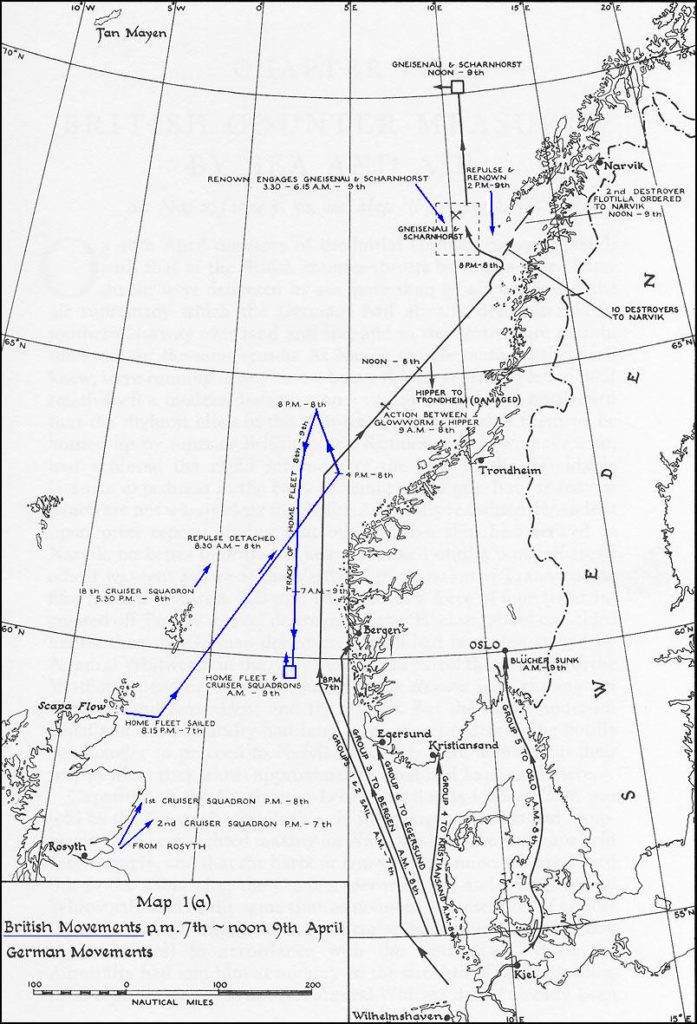
The Battles of Narvik were fought from 9 April to 8 June 1940 as a naval battle in the Ofotfjord and as a land battle in the mountains surrounding the north Norwegian city of Narvik as part of the Norwegian Campaign of the Second World War. The two naval battles in the Ofotfjord on 10 April and 13 April were fought between the British Royal Navy and Nazi Germany‘s Kriegsmarine, while the two-month land campaign was fought between Norwegian, French, British, and Polish troops against German mountain troops, shipwrecked Kriegsmarine sailors and German paratroopers (Fallschirmjäger) from the 7th Air Division. Although defeated at sea off Narvik, losing control of the town of Narvik and being pushed back towards the Swedish border, the Germans eventually prevailed because of the Allied evacuation from Norway in June 1940 following the Battle of France. Narvik provided an ice-free harbour in the North Atlantic for iron ore transported by the railway from Kiruna in Sweden. Both sides in the war had an interest in securing this iron supply for themselves and denying it to the enemy, setting the stage for one of the biggest battles since the Invasion of Poland.[1] Prior to the German invasion, British forces had considered Narvik as a possible landing point for an expedition to help Finland in the Winter War. Such an expedition also had the potential of taking control of the Swedish mines and opening up the Baltic for the Allies.[2] French politicians were also eager to start a second front as far away from France as possible. After the naval battles of Narvik, the port and its surroundings remained in German hands, as no Allied forces were available to be landed there. Naval operations were limited at this stage to shore bombardment, as Narvik was not a primary Allied objective. Among others, the Polish destroyers Grom, Burza and Błyskawica took part in these operations, during which Grom was sunk by German aircraft on 4 May 1940, with the loss of 59 sailors.
Transmission 11. The Race for Space 1959 dir. David L. Wolper
“The Race For Space” is a 1959 made-for-television documentary film directed by David L. Wolper and narrated by famed newsman Mike Wallace. It was nominated for an Academy Award for Best Documentary Feature, and originally aired in April 1960. The film opens with a countdown in Russian and a rocket streaking into the night sky in the opening seconds before Wallace notes “you are the first Americans to see this launching of Sputnik 1.” (Sputnik, the first artificial Earth satellite, launched by the Soviet Union on Oct. 4, 1957. It triggered the Space Race and ushered in new political, military, technological, and scientific developments.) Wallace explains the film’s purpose starting at mark 01:08, and how the “race for space has always involved a great ideal — a dream that existed long before the Cold War. One of man’s oldest dreams — a trip to the stars.” Wallace explains at mark 04:44 how Robert Goddard, an American engineer, professor, physicist, and inventor, built the world’s first liquid-fueled rocket in 1926 and ushered in the Space Age. Wallace interviews his widow, Edith, starting at mark 05:30, who reminisces about her husband’s work while scenes of Goddard and his experiments unfold on the screen. The film goes back prior to World War II and to amateur rocketry clubs in Germany (mark 10:40), which helped filmmakers create the film “Woman in the Moon” in 1929. It is often considered to be one of the first “serious” science fiction films. A decade later it caught the eye of the Nazis (mark 12:09), who enlisted rocketry clubs to experiment with long-range rockets. That led to the creation of the V-2 rocket under the guidance of aerospace engineer Wernher von Braun. The picture goes on to show footage (mark 19:34) of successful rocket launches that had been shown to Adolf Hitler, followed by some of the devastation they brought upon London during World War II (mark 20:30).
With Germany finally defeated, rocketry caught the eye of the Americans and the Russians, who raced to Nordhausen and Peenemunde to get the German rocket scientists and technology that would benefit their own space programs (mark 22:15). As the film continues we learn how von Braun surrendered to American forces and how other German scientists, engineers, and technicians were recruited into working for the US government as part of Operation Paperclip. Wallace talks of life returning to normal after WWII starting at mark Wallace talks of life returning to normal after WWII starting at mark 28:15 and we see scenes of returning troops and life i suburbia, as well learning of the Baby Boom and advent of television as Milton Berle (mark 29:11) “became America’s best-known face.” In the Soviet Union, however, we watch as Josef Stalin (mark 29:21) and later Nikita Khrushchev used those post-war years to educate young students about science and engineering. Russian rocket research looked to surpass that of the United States, leading to renewed efforts by American and German scientists. The results including the Viking and Atlas missiles. The USSR continued to the next step, returning to the launch of Sputnik 1 (mark 36:45) and a more-detailed explanation on the first Earth satellite. As the United States tried to determine its next step, the USSR moved forward once again sending Laika (mark 38:12), the first dog in space, on a one-way trip on board Sputnik 2 in November 1957. Although the dog died within hours, it became the first living creature to orbit Earth. American ingenuity came up short, as starting at mark 40:32 we see a series of failed US rocket launches. Scientists like von Braun and James Van Allen (mark 42:35) worked to advance the program. The first successful U.S. satellite, Explorer I, was launched into Earth orbit by the Army on Jan. 31, 1958, at Cape Canaveral, Florida, four months after Russia orbited Sputnik (mark 48:25). Sources: The Race for Space: A Feature Length Documentary Produced in Cooperation with The Department of Defence, U.S.A, and the Ministry of Culture, U.S.S.R. the early experimentation in the rocket age began simultaneously with a Russian and an American – https://www.cia.gov/library/readingroom/docs/CIA-RDP83-01022R000100060002-6.pdf
Transmission-12. El Capitan 2022, Of Course I Still Love You
Of Course I Still Love You | Space X Atlantic
An autonomous spaceport drone ship (ASDS) is an ocean-going vessel derived from a deck barge, outfitted with station-keeping engines and a large landing platform and is controlled by an autonomous robot. Construction of such ships was commissioned by aerospace company SpaceX to allow for recovery of rocket first-stages at sea for missions which do not carry enough fuel to return to the launch site after boosting spacecraft onto an orbital or transplanetary trajectory.[1][2] SpaceX has two operational drone ships and has a third under construction as of early 2018. Just Read the Instructions operated in the Pacific for launches from Vandenberg; Of Course I Still Love You operates in the Atlantic for launches from Cape Canaveral. A Shortfall of Gravitas is under construction. As of 17 February 2020, 38 Falcon 9 flights have attempted to land on a drone ship, with 30 of them succeeding (81%). The ASDS ships are a key early operational component in the SpaceX objective to significantly lower the price of space launch services through “full and rapid reusability,”[3] and were developed as part of the multi-year reusable rocket development program SpaceX undertook to engineer the technology. Any Falcon flights going to geostationary orbit or exceeding escape velocity require landing at sea, encompassing about half of SpaceX missions.
April 08 2016 – The Falcon 9 first-stage performed a succesful landing on OCISLY in the Atlantic Ocean off the coast of Florida at T+9 minutes and 10 seconds after liftoff of SpaceX CRS-8, the first ever successful landing of a first stage on an Autonomous Spaceport Drone Ship. The rocket was succesfully affixed to the barge for the maritime transport portion of the journey back to port, and succesfully completed its journey, entering Port Canaveral early in the morning of 12 April 2016. Of Course I Still Love You (OCISLY), had been under construction in a Louisiana shipyard since early 2015 using a different hull—Marmac 304—in order to service launches on the east coast. It was built as a replacement for the first Just Read the Instructions and entered operational service for Falcon 9 Flight 19 in late June 2015. As of June 2015, its home port was Jacksonville, Florida,[12][15] but after December 2015, it was transferred 160 miles (260 km) further south, at Port Canaveral. The droneship is fitted with cameras, sensors and other measuring equipment to allow SpaceX to record and gather data on the landings. On a number of occasions, it has been shown that the cameras can be remotely adjusted and moved during landings to provide a better perspective. Of Course I Still Love You is fitted with 2 antennas allowing for the up-link of data to a satellite and for communication with the incoming booster. A common problem experienced during SpaceX webcasts is the video connection to the droneship cutting out during the landing. This occurs because vibrations created by the landing booster violently shake the droneship, temporarily breaking the connection and up-link to the satellite.
El Capitan || The San Franciscan Livermore Black Racks
Exascale supercomputers are capable of executing a quintillion (1018) calculations each second. This is much faster than the fastest supercomputers in the world today which solve problems at the petascale, or a quadrillion (1015) calculations per second. According to the Exascale Computing Project – a collaborative effort of the DOE’s Office of Science and the NNSA – exascale computers represent the next milestone in computing achievement. Their ability to simulate more realistically the processes involved in a range of areas including precision medicine, climate modelling, materials science and nuclear physics will have profound impacts on everyday life, it says. “The Department of Energy is the world leader in supercomputing and El Capitan is a critical addition to our next generation systems,” US Energy Secretary Rick Perry said. “El Capitan’s advanced capabilities for modelling, simulation, and Artificial Intelligence will help push America’s competitive edge in energy and national security, allow us to ask tougher questions, solve greater challenges, and develop better solutions for generations to come.” El Capitan will be used to perform “mission critical” research to maintain the US nuclear weapons stockpile, NNSA said. “It will be used by researchers … to run 3D simulations and calculations at resolutions that are difficult, time-consuming, or even impossible using today’s state-of-the art supercomputers,” the administration added. The computer, which is scheduled for delivery in late 2022, will be the DOE’s third exascale supercomputer after Aurora at Argonne National Laboratory and Frontier at Oak Ridge National Laboratory (ORNL), both of which are scheduled for delivery in 2021. All three are to be built by Cray using their Shasta architecture, Slingshot interconnect, and new system software platform.
Sept 27 2019. An employee at a nuclear research center in the closed town of Sarov in Russia was fined for illegally mining Bitcoin (BTC). A man was fined 450,000 rubles ($7,000) for trying to mine Bitcoin by using a petaflop-capable supercomputer at his workplace, the All-Russian Scientific Research Institute in Sarov, Russia. Sarov, about 230 miles east of Moscow is a closed town as it is the Russian center for nuclear weapons research. The court delivered the verdict on Sept. 17. The nuclear research employee was convicted of unlawful access to computer information and a violation of the rules for storing information. An Armenian IT company was accused of illegally accessing electricity and using it to mine cryptocurrencies. The Armenian National Security Service claimed that the IT company installed cryptocurrency mining equipment inside one of its hydropower plants and as a result illegally consumed 1.5 million kilowatt-hours of electricity — worth more than $150,000, locally — over the course of 1.5 years. In May, Cointelegrap reported that the state authorities of China’s Sichuan province were investigating local Bitcoin mining farms that allegedly been built illegally. More than 30,000 Bitcoin mining machines were reportedly constructed without official approval from the local government and were subject to further examination.
The missile in times of V
Trade dispute quarantines in wake of nuclear Fukushima | the nuclear accident, V and I.
South Korea – Japan 2 ocean Dyads rotating at the Far Eastern ledge of the heartland.
channel blue – complacency is a world locked into the brightness of the bomb flash, while V hammers off-lens. – The bomb is spherical, containable to sight, V has no dimensions, no shape – what is V-speed to the Belt and Road? V-speed feels like so many multiples of ’08. V’s arrival is history distilled to an intensive nuclear flash – time’s line distends in the barometric pulse – the way the windows blow out and the body becomes a photograph on a wall, and all time to now – spent focalising on the slow moving cogs of easternisation, world shifts, longue durees – is now just metabolic refuse of a fever overnight and Oppenheimer’s lament suffers over, we are become bereft, restarter of worlds in the end of times of Shincheongji’s Mt Chungkye. and how a nuclear flash would look in the nuclear blue sunset of the virus.




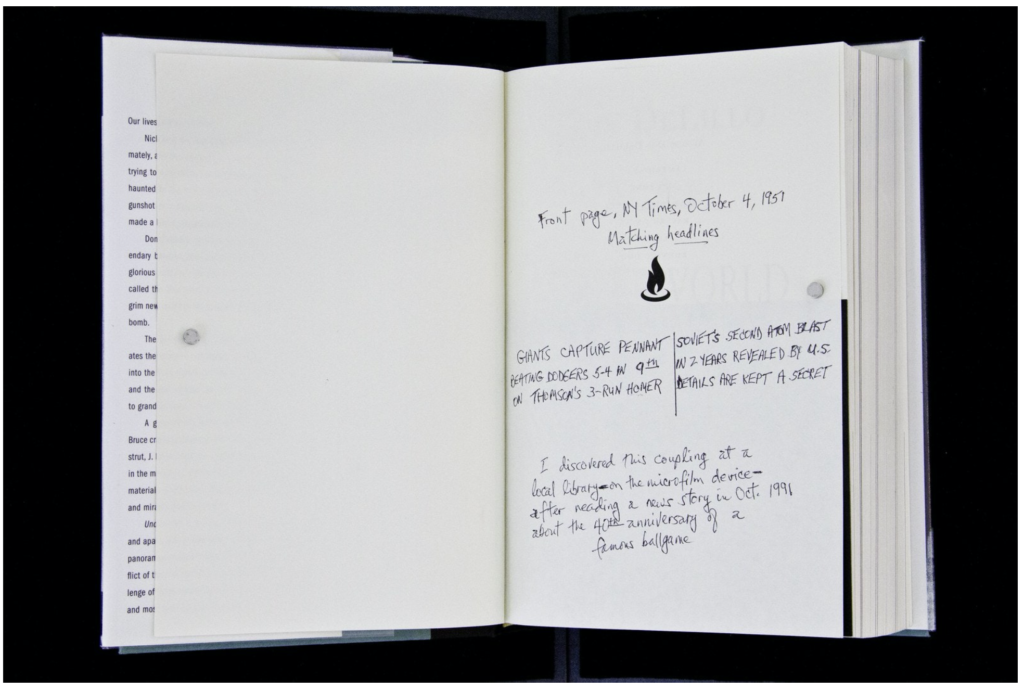
Transmission-13b. Arctic uggianaqtuq (Inuktitut: to behave strangely)
Xue Long (simplified Chinese: 雪龙; traditional Chinese: 雪龍; pinyin: Xuě Lóng; literally: ‘Snow Dragon’)[5] is a Chinese icebreaking research vessel. Built in 1993 at Kherson Shipyard in Ukraine, she was converted from an Arctic cargo ship to a polar research and re-supply vessel by Hudong-Zhonghua Shipbuilding of Shanghai by the mid-90s. The vessel was extensively upgraded in 2007 and 2013.
Xue Long unexpectedly arrived in 1999 at the small Canadian coastal village of Tuktoyaktuk, on the Arctic Ocean.[18][19][20] The inability of the Canadian authorities to track the vessel stirred enough controversy that the incident is still being cited as evidence of Canadian unpreparedness to defend its northern sovereignty.[18][19][20] As of 2018, Xue Long is the only Chinese icebreaking research ship in service. A second Chinese polar icebreaker named MV Xue Long 2[6], slightly smaller but more capable than Xue Long, entered service in July 2019.
In the summer of 2012 Xue Long became the first ship from the People’s Republic of China to cross the Arctic Ocean to Europe amid the record ice melt.[22] The Xue Long left port on 2 July, sailed through the Bering Strait then joined a westbound convoy on the Northern Sea Route to the Barents Sea, before arriving in Iceland in mid-August. It departed Iceland on 20 August, sailed past Svalbard – without stopping to visit China’s Yellow River Station – and made a run at the North Pole, falling short. It then sailed a high latitude line east, back to the Bering Strait, returning to her base in Shanghai on September 27, 2012, completing its fifth Arctic voyage.[23] “Unfortunately we didn’t reach the North Pole because Xue Long‘s icebreaking capability isn’t strong enough,” said one of the ship’s officers.[24] Of note, while China did not state how close Xue Long got to the North Pole in late August 2012, China’s Polar Institute did not claim a new “high north” record, suggesting the vessel did not break her record set in 2010. Xue Long provides annual resupply for China’s Antarctic Zhongshan Station at Prydz Bay.[25] In January 2019, Xue Long hit an iceberg during sea fog whiteout in the Amundsen Sea and sustained damage when about 250 tonnes of ice fell on the ship. CCTV had video of sailors removing large blocks of ice, and China’s Ministry of Natural Resources reported damage to the foredeck and mast.[26]
Ice has a social life. Its changeability shapes the culture, language and stories of those who live near it. In Kulusuk, the consequences of recent changes are widely apparent. The inhabitants of this village are part of the precariat of a volatile, fast-warping planet. The melting of the ice, together with forced settlement and other factors, has had severe effects upon the mental and physical health of native Greenlanders, causing rates of depression, alcoholism, obesity and suicide to rise, especially in small communities. ‘The loss of that landscape of ice,’ writes Andrew Solomon, studying depression rates in Greenland, ‘is not merely an environmental catastrophe, but also a cultural one.’ The Inuktitut of Baffin Island in the Canadian Arctic have begun to use a word that refers at once to the changes in the weather, the changes in the ice, and the consequent changes in the people themselves. The word is uggianaqtuq – meaning ‘to behave strangely, unpredictably’. Yet if any population knows what it is like to live with the unpredictability of ice it is surely the Inuit, who have been adapting to its shifts for millennia. The last few years have seen the granting of more than fifty mining licences in Greenland, allowing exploratory mining for gold, rubies, diamonds, nickel and copper, among other minerals. And on the southern tip of Greenland, close to a small town with high unemployment called Narsaq, lies one of the world’s largest uranium deposits. Niels Bohr, the Nobel Prize-winning atomic physicist who worked on the Manhattan Project, visited Narsaq in 1957, shortly after the discovery of the deposit. A joint Chinese-Australian mining project now proposes to establish an open-pit mine behind Narsaq, in order to acquire not only uranium but also the rare earth minerals used in wind turbines, mobile phones, hybrid cars and lasers. That evening in Kulusuk a lurid sunset brews above the village, lilac and orange backlighting a sawtooth ridge of peaks, with incandescent reefs of ribbed clouds. It is alpenglow of a kind – but of an incredible wattage. ‘It’s the ice cap that makes sunsets like this,’ Matt explains. ‘It’s probably the biggest mirror in the world: hundreds of thousands of square miles of ice reflecting up the sun as it dips towards the horizon. (Robert Macfarlane, Underland, 2019).
Transmission-14. Blue Dot - Red Planet (BDRP) Dyad 21st C Phenomenon
In Stanislaw Lem’s Solaris, the planet orbits two suns: a red sun and a blue sun. For 45 years after its discovery, no spacecraft had visited Solaris. From where I was, I could see only a part of the corridor encircling the laboratory. I was at the summit of the Station, beneath the actual shell of the superstructure; the walls were concave and sloping, with oblong windows a few yards apart. The blue day was ending, and, as the shutters grated upwards, a blinding light shone through the thick glass. Every metal fitting, every latch and joint, blazed, and the great glass panel of the laboratory door glittered with pale coruscations. I got up. The disc of the sun, reminiscent of a hydrogen explosion, was sinking into the ocean, (synonymically, the two bombs one satellite programme could refer to our current beam, the U.S. as one sun, China as another, and the UK a satellite between.) The China U.S. Trade War, the Thucydidean Complex, all of this stems from a planetary imaginary – (Pale) Blue Dot Network vs. Red Planet – the U.S. imaginary of China is one that draws on the famous scene in 2001: A Space Odyssey, when Hal5000 responds menacingly. The game afoot is to overcome this optical inertia, a planet cannot extricate or decouple itself from two suns, both are here to stay. In an April 2020 paper from the Brookings Institute – Mobilizing the Indo-Pacific Infrastructure Response to China’s Belt and Road Initiative in Southeast Asia – Roland Rajah writes:
China has become a significant financier of major infrastructure projects in Southeast Asia under the banner of its Belt and Road Initiative (BRI). This has prompted renewed interest in the sustainable infrastructure agenda in Southeast Asia from other major powers. In response, the United States, Japan, and Australia are actively seeking to coordinate their own revamped overseas infrastructure efforts as part of a trilateral arrangement aimed at upholding a free and open Indo-Pacific. Though principally motivated by geostrategic concerns, such international policy efforts are also well-justified on economic grounds — given the persistence of Southeast Asia’s large infrastructure financing gap, low world interest rates, and concerns about structurally weak global economic growth. In addition, China’s approach to infrastructure poses clear risks to governance, as well as economic, environmental, and social sustainability in the region. Finally, at the time of writing, the COVID-19 virus has unleashed a global health and economic pandemic of enormous proportions. Policymakers are currently focused on containing the health and economic damage of the virus. However, as the priority shifts to the post-crisis recovery, this inevitably will see focus return to the sustainable infrastructure agenda — with Southeast Asian governments looking for willing partners to assist. The current approach of the trilateral partners, however, is likely to fall short in its ambition to provide a credible response to China’s BRI. The present emphasis on mobilizing more private capital for infrastructure development cannot deliver the kind of dividends needed to compete with the scale of China’s BRI. Nor is an emphasis on high infrastructure standards likely to deter Southeast Asian governments from taking on Chinese projects as long as China continues to be perceived as offering faster, less risk-averse, and more responsive support compared to alternatives available from traditional partners. This policy brief makes several practical recommendations that would allow the trilateral partners to compete more effectively with China while simultaneously promoting more sustainable development outcomes. This includes increasing efforts to expand the pool of bankable projects and providing technical assistance to help Southeast Asian governments to better manage any BRI projects they might take on — particularly via the multilateral development banks, which can act as politically neutral technical arbiters. Meanwhile, the trilateral partners need to improve the competitiveness of their own infrastructure approaches to be more streamlined, less risk-averse, and more fit-for-purpose. This could be a useful part of the agenda for the new Blue Dot Network. More ambition is also needed. Contrary to the assumption that it impossible to match China’s financing scale, estimates presented in this policy brief suggest that the gap is not that large — implying the trilateral partners can indeed keep pace if they are willing to direct adequate budgetary resources to the task. Finally, Australia is currently the only trilateral partner without access to the full range of development financing instruments and should consider options for addressing this gap in its capabilities.
The Chromatic blur of the 21s Century, Thomas J. Wright in All Measures Short of War: The Contest for the Twenty First Century and The Future of American Power (2017) writes holds parallels with the early period of the Cold War:
History suggests that instability is at its greatest in the early phases of a new paradigm, especially one involving strategic competition. For example, the early period of the Cold War was prone to crisis, which only abated and became more predictable after the Cuban Missile Crisis of 1962. The reason is clear: at the beginning, no one is quite sure where the red lines are. The protagonists probe and test each other and often overstep the mark. They are, in effect, in a learning process. Later on, clarity descends. They have a better sense of each other’s core interests and strategic limits, and they can adapt to a new equilibrium and “peaceful, albeit tense, coexistence. As the post–Cold War order comes to an end, ambiguity reigns and instability beckons. This book’s title, All Measures Short of War, is taken from President Franklin Delano Roosevelt’s policy in 1939–1941 to do everything to help the Allies short of declaring war on Germany. Measures Short of War is also the title of an influential lecture given by George F. Kennan, the author of the doctrine of containment, at the National War College in September 1946 about how the United States and the Soviet Union would try to pressure each other. Now, in the coming era, all of the great powers want to avoid a major war with each other. But they will compete fiercely to gain an upper hand in ways short of a major war. They will engage in coercive diplomacy and military build-ups. They may use force against smaller countries and engage in limited proxy wars with each other. They will exploit each other’s vulnerabilities in an interdependent world—economically, technologically, and politically. They may even form temporary tactical alliances with rivals to accomplish their short-term objectives.
None of this is to say that a major war is impossible. It could occur inadvertently, through miscalculation or a dramatic change in intentions. Diplomacy will be needed to keep the peace. Indeed, when Roosevelt pursued an “all measures short of war” strategy, war did break out. But the most likely outcome is a prolonged period of high-stakes peacetime competition with all of the old red lines blurred if not erased. This competition will mainly take place in the three regions of greatest strategic importance—Europe, East Asia, and the Middle East. There will be a strong ideological component that pits liberal democracy against authoritarianism. One of the most important features of this new era of nationalism and competition is that it occurs against a backdrop of unprecedented globalization. The major powers are closely linked with each other economically and technologically. It is widely believed that interdependence promotes cooperation, but in the coming decade it is more likely to be perceived as a source of vulnerability and strategic competition, whether it involves sanctions, cyberwarfare, or other means of coercion. We already saw this play out in Western sanctions on Russia and in Russia’s extraordinary interference in the 2016 U.S. election. This weaponization of interdependence is just a glimpse of what is to come. “Norms may emerge, but only after a struggle, with actions taken by all sides, in which an equilibrium is formed and adjusted in accordance with the realities of the balance of power. The United States is ill prepared for a nationalist and geopolitically competitive world. Those who support the liberal order, like President Barack Obama, have been slow to understand the challenges to it from revisionist states, a collapsing Middle East, and rising populism. Those who embrace the shift, like President Trump, seem unaware of the long-term consequences of a more chaotic world. But Americans cannot afford strategic drift.” “The good news is that the United States is strong enough to shape the future. It is not in decline, and it has considerable strengths and advantages that it can bring to bear in its foreign policy. But Americans have a strategic choice to make as consequential as the decision to create the liberal order in the late 1940s. The United States can reduce its role in the world and allow a spheres-of-influence system to emerge, one in which revisionist powers like Russia and China share power with the United States in Europe and East Asia. Or the United States can compete responsibly with these powers to revive and uphold the liberal order. Although sharing power in a spheres-of-influence system may appear attractive at first glance, it would fail to accomplish its objectives and would make the world more dangerous. This book makes the argument for a strategy of responsible competition, which entails increasing American engagement in Europe and East Asia and recognition of the competitive nature of our age. Responsible competition is a strategy the Trump administration is unlikely to adopt, but the United States must ultimately embrace it to protect its long-term interests in the new era of great-power competition.
An aside: what’s interesting about the chroma beam we are on is how blues and reds prefigure at the fore of the search for exoplanetary lifeforms, see the article below from Cambridge University:
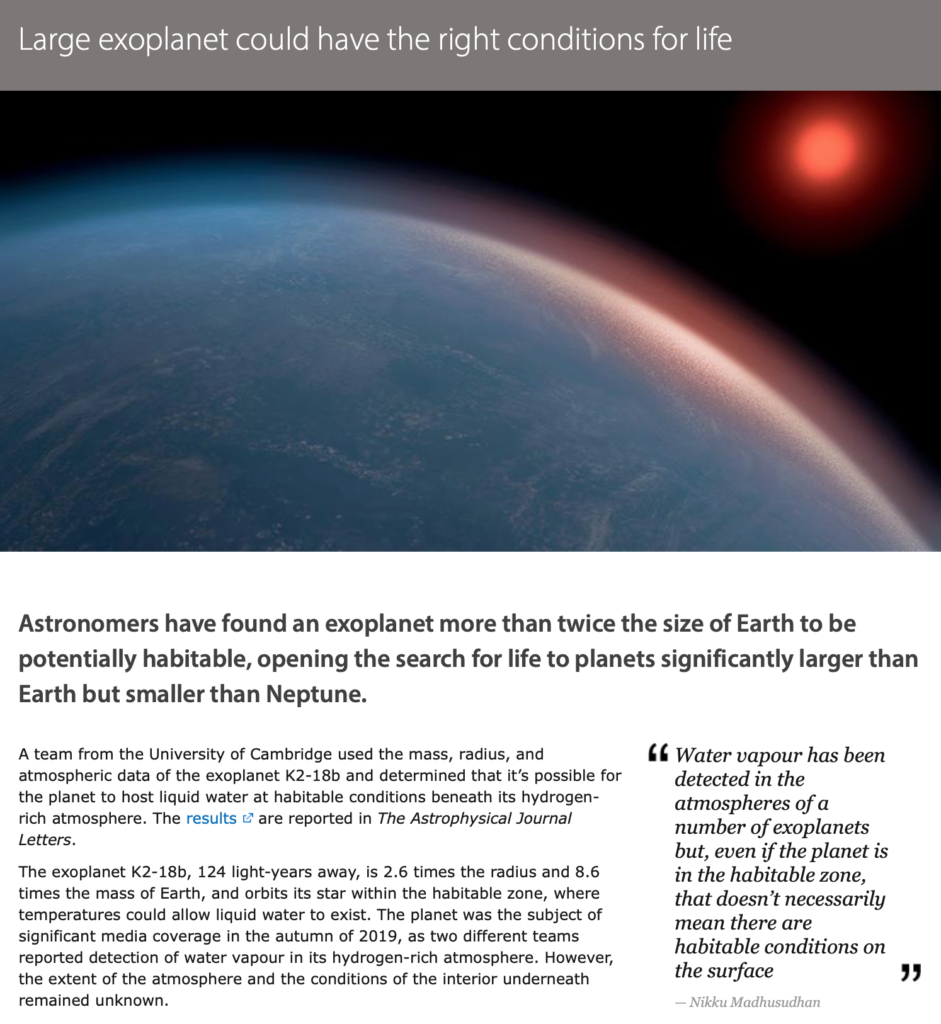
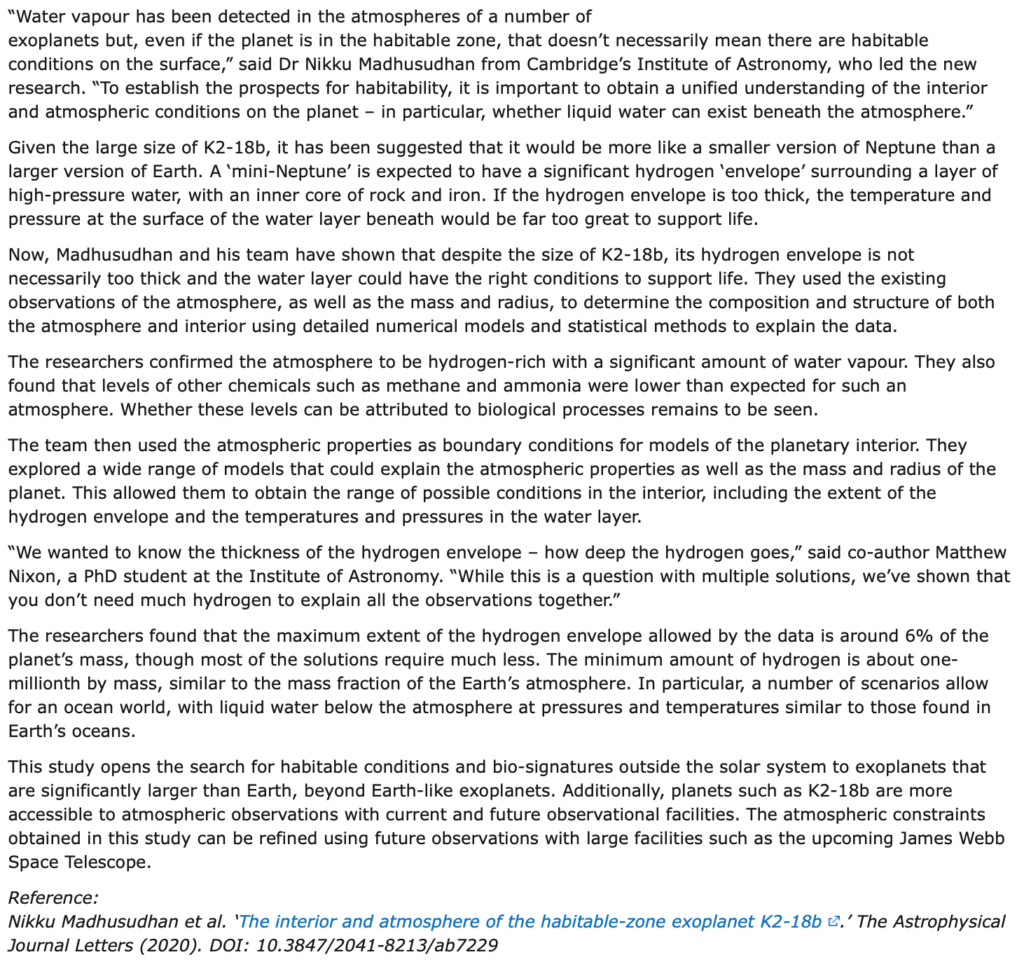
Transmission 15. Darvaza Crater 1971 - retinal lesion
The Darvaza gas crater (Turkmen: Garagum ýalkymy),[1][2][3] also known as the Door to Hell or Gates of Hell, is a natural gas field collapsed into a cavernlocated in Derweze, Turkmenistan.[4] Geologists intentionally set it on fire to prevent the spread of methane gas, and it is thought to have been burning continuously since 1971. According to Turkmen geologist Anatoly Bushmakin, the site was identified by Soviet engineers in 1971.[6] It was originally thought to be a substantial oil field site.[9] The engineers set up a drilling rig and operations to assess the quantity of oil available at the site. Soon after the preliminary survey found a natural gas pocket, the ground beneath the drilling rig and camp collapsed into a wide crater and was buried. Expecting dangerous releases of poisonous gases from the cavern into nearby towns, the engineers considered it advisable to burn the gas off. It was estimated that the gas would burn out within a few weeks, but it has instead continued to burn for 48 years and is expected to keep on burning.[6] The early years of the crater’s history are uncertain:[10] local geologists say the collapse into a crater happened in the 1960s, and the gases were not set on fire until the 1980s. There are, however, no records available of either the Soviet or Turkmen version of events.[5][3] In April 2010, the President of Turkmenistan, Gurbanguly Berdimuhamedow, visited the site and ordered that the hole should be closed. In 2013, he declared the part of the Karakum Desert with the crater a nature reserve.[6] In 2019, he appeared on state television doing doughnuts around the crater to disprove rumours of his death. Like the eternal fire of Baba Gurgur in Iraq, or the well to hell story (legend holding that a team of Russian engineers purportedly led by an individual named “Mr. Azakov” in an unnamed place in Siberia had drilled a hole that was 14.4 kilometres (8.9 mi) deep before breaking through to a cavity. Intrigued by this unexpected discovery, they lowered an extremely heat-tolerant microphone, along with other sensory equipment, into the well. The temperature deep within was 1,000 °C (1,832 °F)—heat from a chamber of fire from which (purportedly) the tormented screams of the damned could be heard. The Soviet Union had, in fact, drilled a hole more than 12 kilometres (7.5 mi) deep, the Kola Superdeep Borehole, located not in Siberia but on the Kola Peninsula, which shares borders with Norway and Finland. Upon reaching the depth of 12,262 metres (40,230 ft) in 1989, some interesting geological anomalies were found, although they reported no supernatural encounters.), the eternal fire of Baba Gurzur, like a retinal lesion on the surface – optical inertia as an ideological and material inertia, the shot-throughness of the landscape, its psyche of continuity and breaks and gauge-velocities and traumas, pregnating.
As a rule, the post-Soviet states in Central Asia are lumped together whenever they are mentioned, as Turkistan, as the region was known in the 1800s, or simply the Stans, or the comedy-inspired Farawayistan. The suffix “stan” comes from Persian and means “place” or “land”. Turkmenistan therefore means “land of the Turkmen people”. Despite this common suffix, the five Stans are remarkably dissimilar: Turkmenistan is more than eighty per cent desert, whereas more than ninety per cent of Tajikistan is mountains. Kazakhstan has become so wealthy – thanks to oil, gas and minerals – that it recently put in a bid to host the Winter Olympics. Turkmenistan, too, has vast oil and gas reserves, whereas Tajikistan is poor as a church mouse. In many towns and villages in Tajikistan, inhabitants have electricity for only a few hours each day in winter. The regimes in Turkmenistan and Uzbekistan are so authoritarian and corrupt that they are comparable with the dictatorship in North Korea: there is no free press and the president is omnipotent. In Kyrgyzstan, on the other hand, the people have deposed two presidents. Although the five countries are in many ways very different, they share the same origin and fate: for almost seventy years, from 1922 to 1991, they were part of the Soviet Union, a gigantic social experiment without parallel in history. The Bolsheviks abolished private ownership and other individual rights. Their goal was a communist, classless society, and they stopped at nothing to achieve this. Every area of society underwent radical change. The economy was steered by ambitious five-year plans, farming was collective, and heavy industry was developed from more or less nothing. The Soviet Union was a staggeringly detailed system. The individual was subservient to the common good: entire peoples were exiled, and millions were classified as “enemies of the people” because of their religious, intellectual or financial background. They were either executed or sent to labour camps in remote parts of the empire where the chances of survival were slim. There was widespread suffering, and the social experiment was a catastrophe in terms of the environment. But not everything was bad in the Soviet Union. The Bolsheviks prioritised schools and education, and almost succeeded in eradicating illiteracy in parts of the Union where it had previously been widespread, such as Central Asia. They invested in road systems and infrastructure, and made sure that all Soviet citizens had access to healthcare, as well as ballet, opera and other welfare and cultural benefits. If you spoke Russian, you could be understood everywhere, from Karelia in the west to the Mongolian steppes in the east, and, wherever you went, the red Communist flag fluttered on the flagpoles. From the ports on the Baltic to the shores of the Pacific, society was organised according to the same ideological model, with the Russian ruling class in all positions of power. At its peak, the Soviet Union covered one sixth “of the surface of the earth, and was home to more than a hundred ethnic groups. As I was growing up, the end of the Soviet Union was in sight. When I was in my second year at primary school, the vast Union started to come undone at the seams and then quickly fell apart. The world map changed in autumn 1991: the fifteen republics that had together constituted the Soviet Union, also known as the Union of Soviet Socialist Republics, broke out of the Union to become independent states, more or less overnight. In the course of a few months, Eastern Europe acquired six new countries: Estonia, Latvia, Lithuania, Belarus, Ukraine and Moldova. Central Asia got five new countries: Kazakhstan, Kyrgyzstan, Uzbekistan, Tajikistan and Turkmenistan. And three new countries emerged in the Caucasus region: Georgia, Azerbaijan and Armenia. On December 26, 1991, the Soviet Union was formally dissolved. However, the old map continued to be used in our classrooms for as long as I was at school. At regular intervals, the teacher would unroll it and point to the new countries, which were not marked by any borders. For years, we dealt with this vast superpower’s fictitious border, which no longer existed, and the invisible but very real borders of these new countries. (Sovietistan, Fatland, 2019)
If we are smear where ethics why sphera when sever



